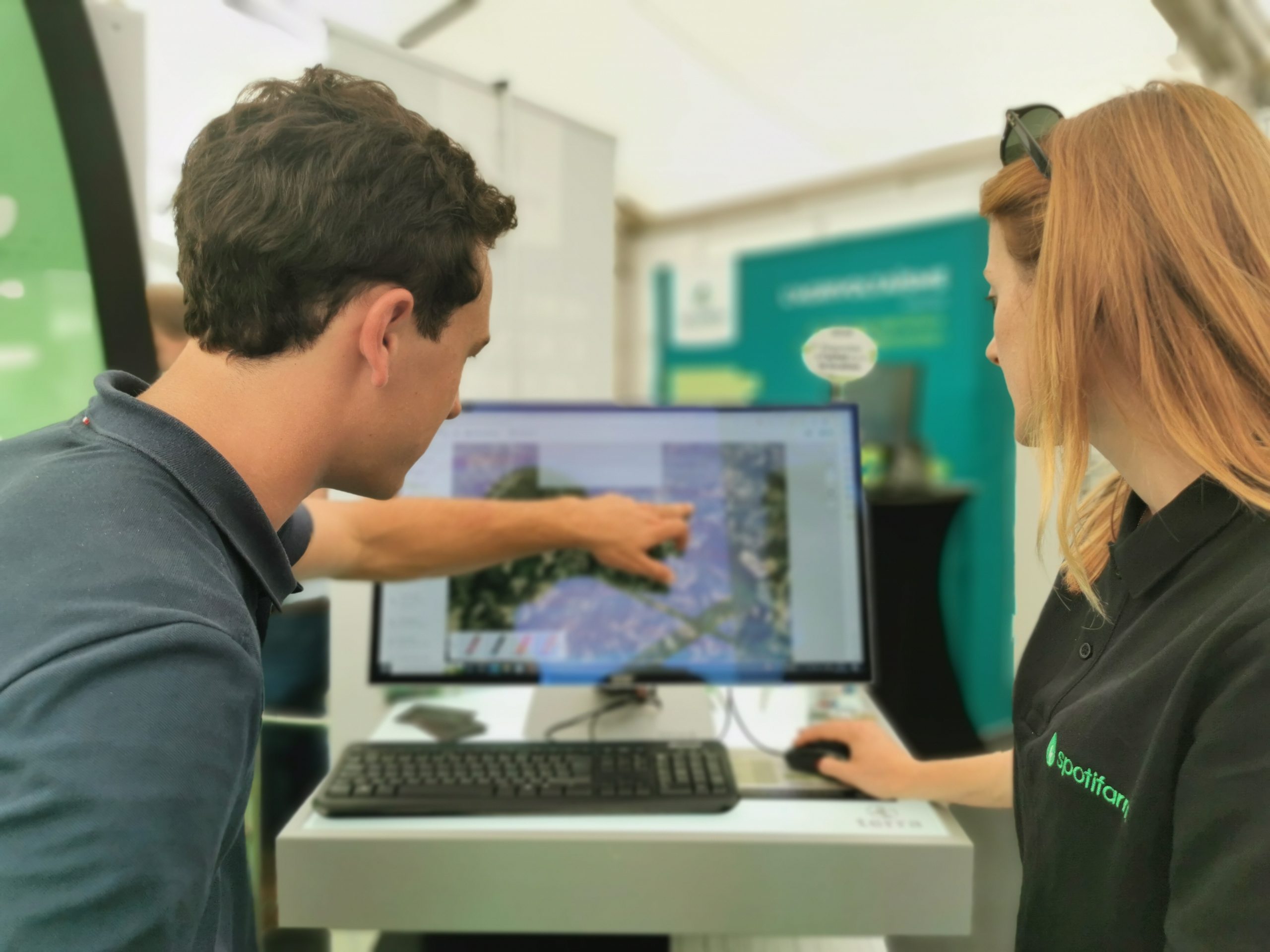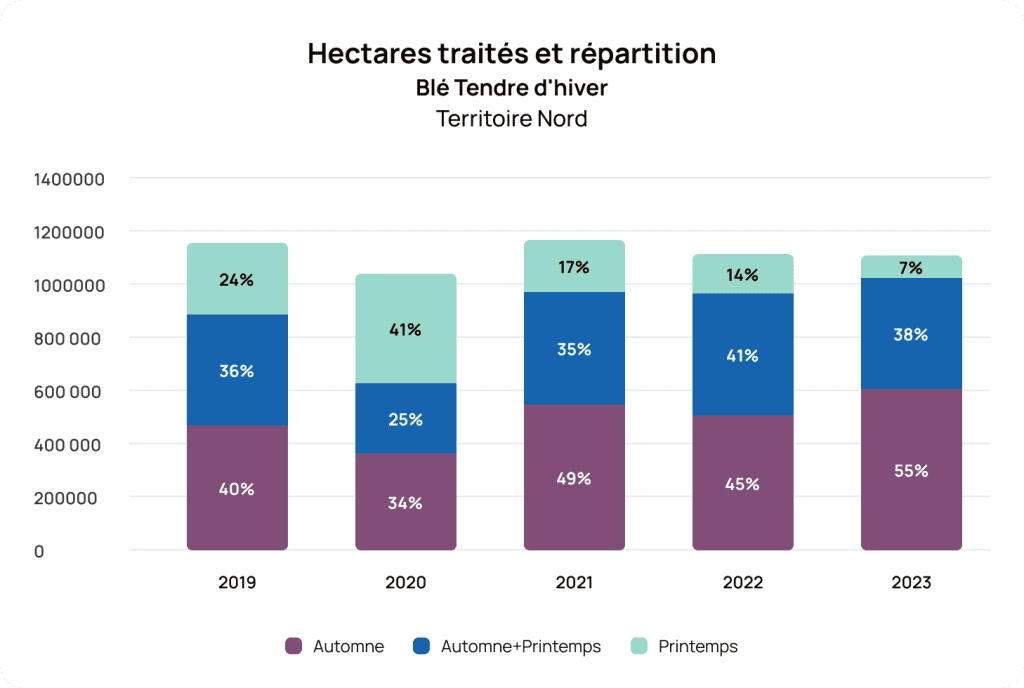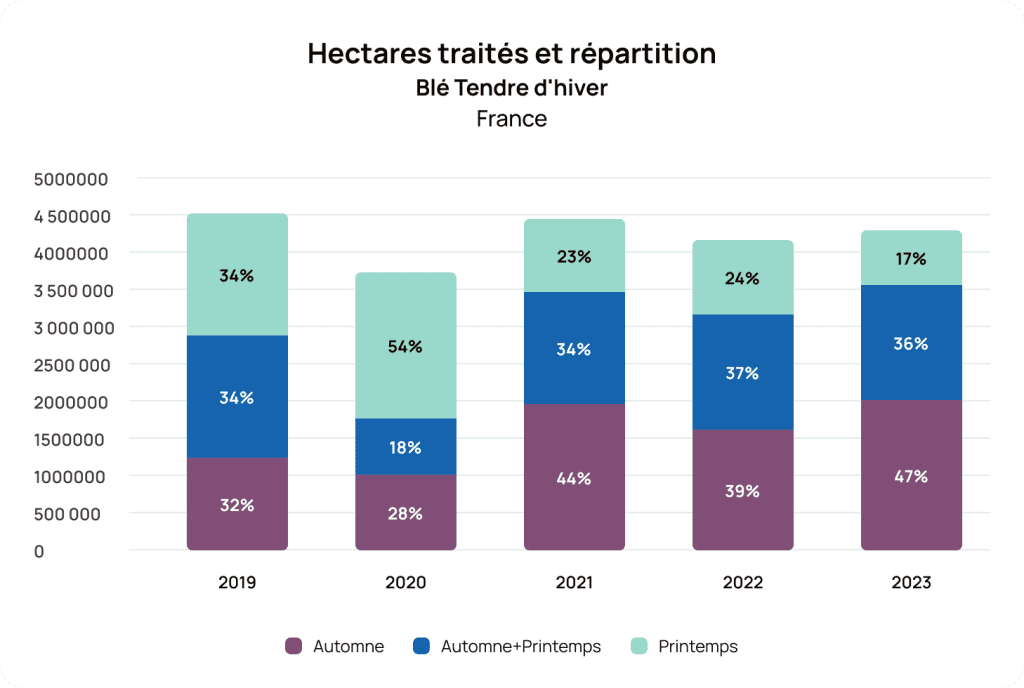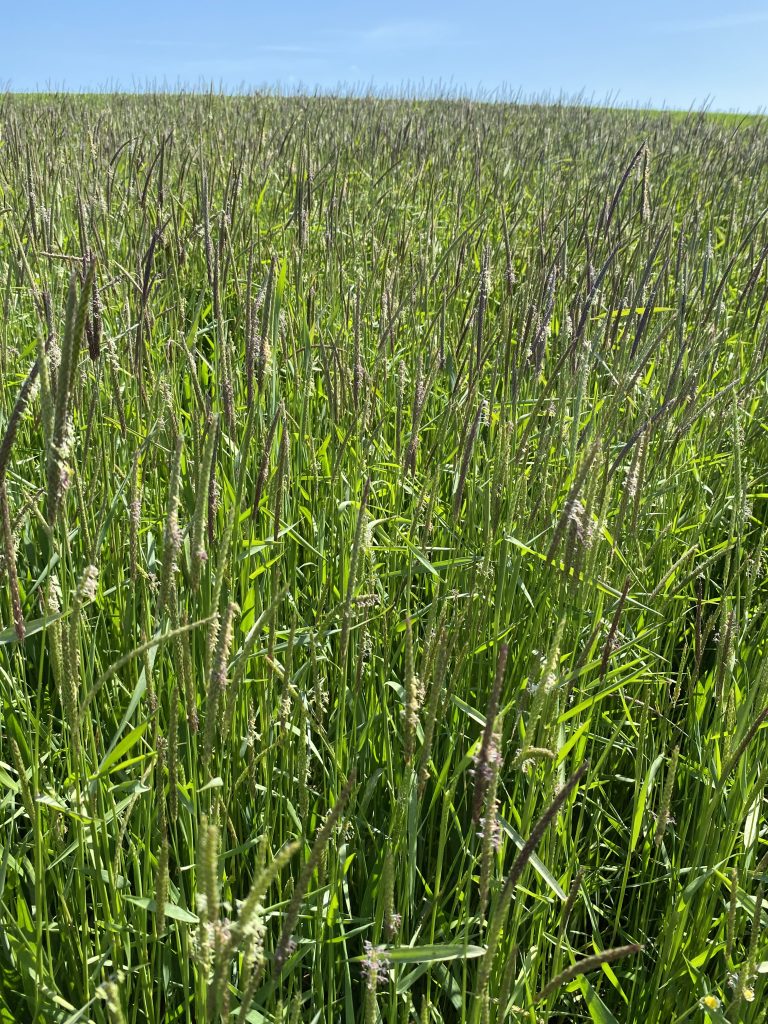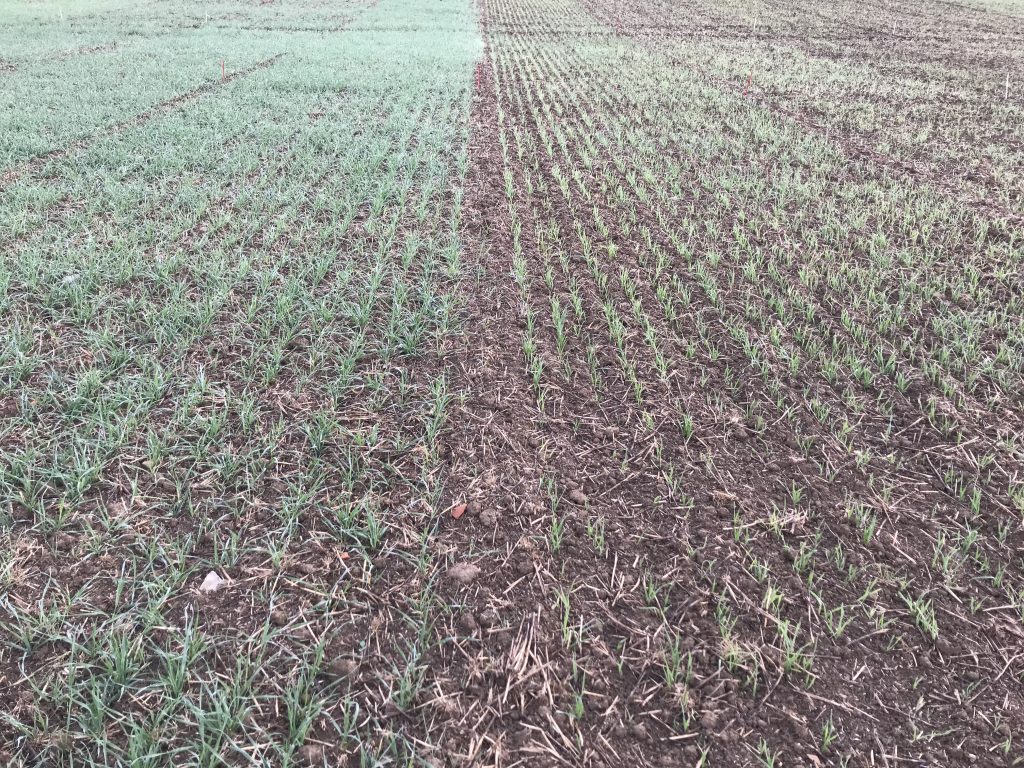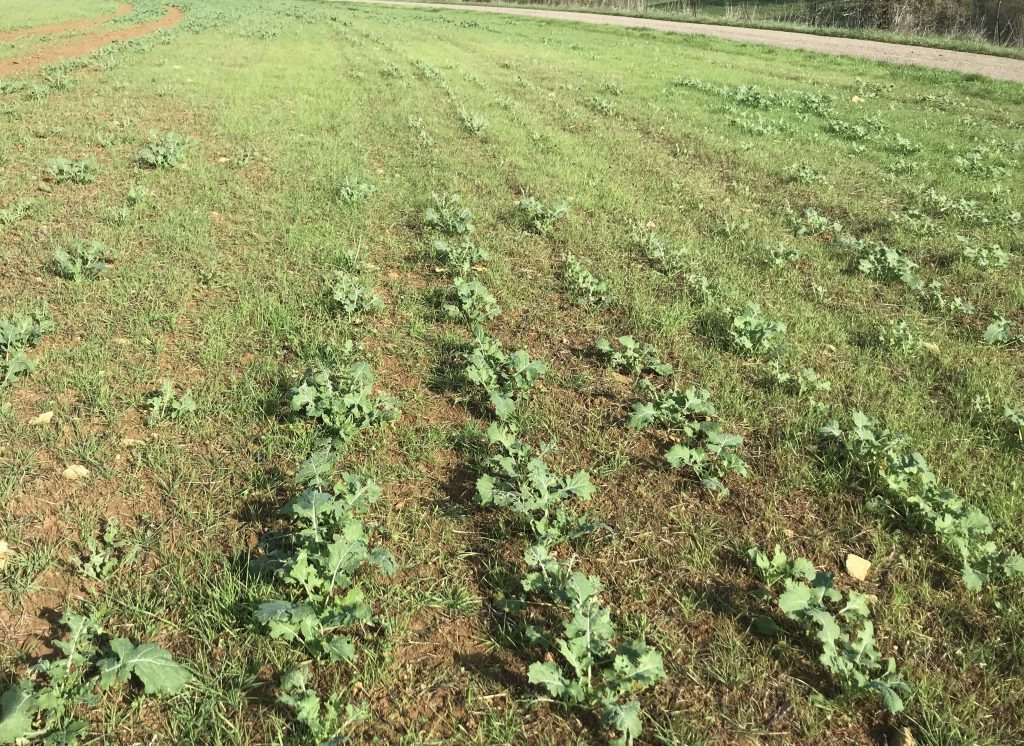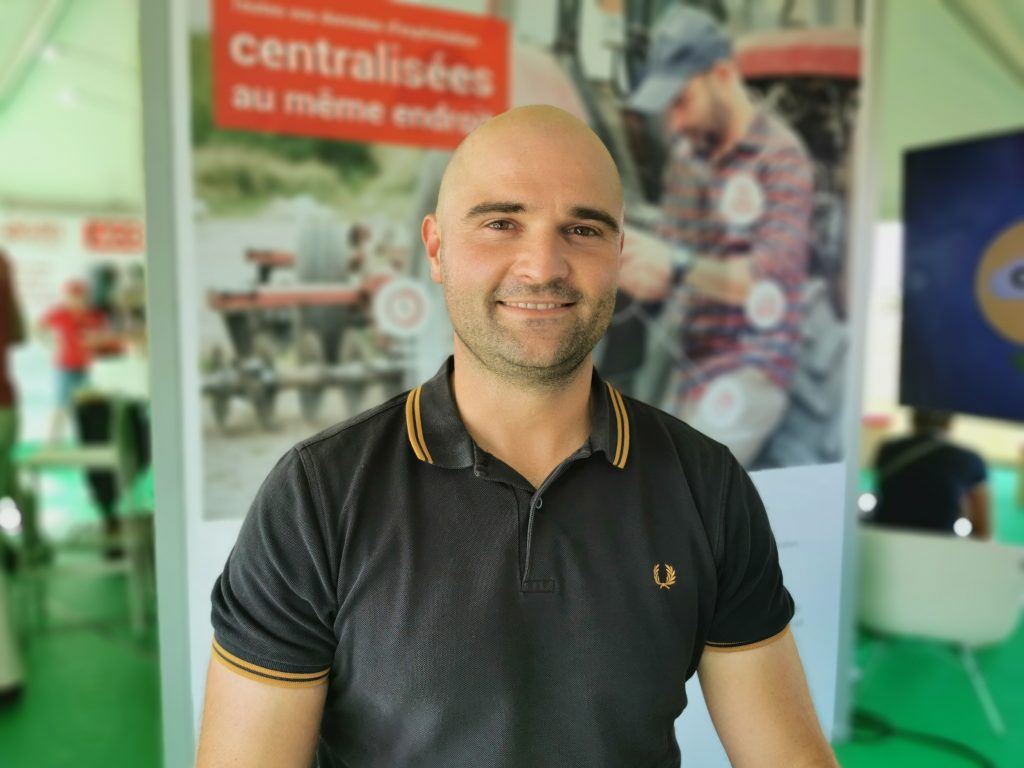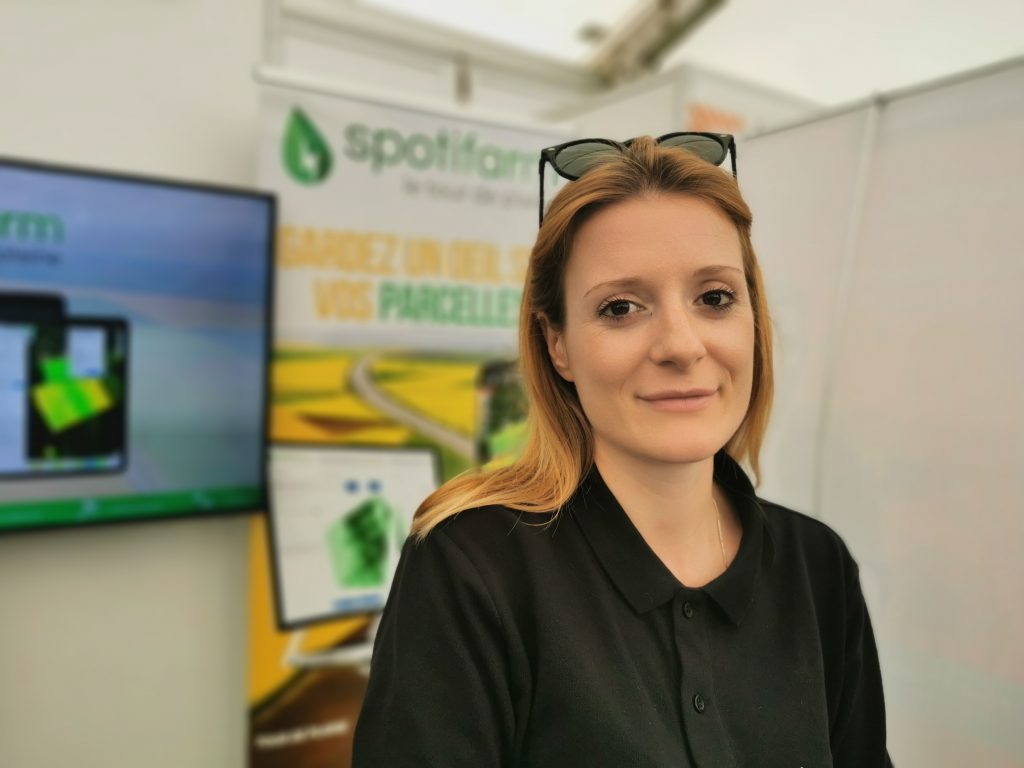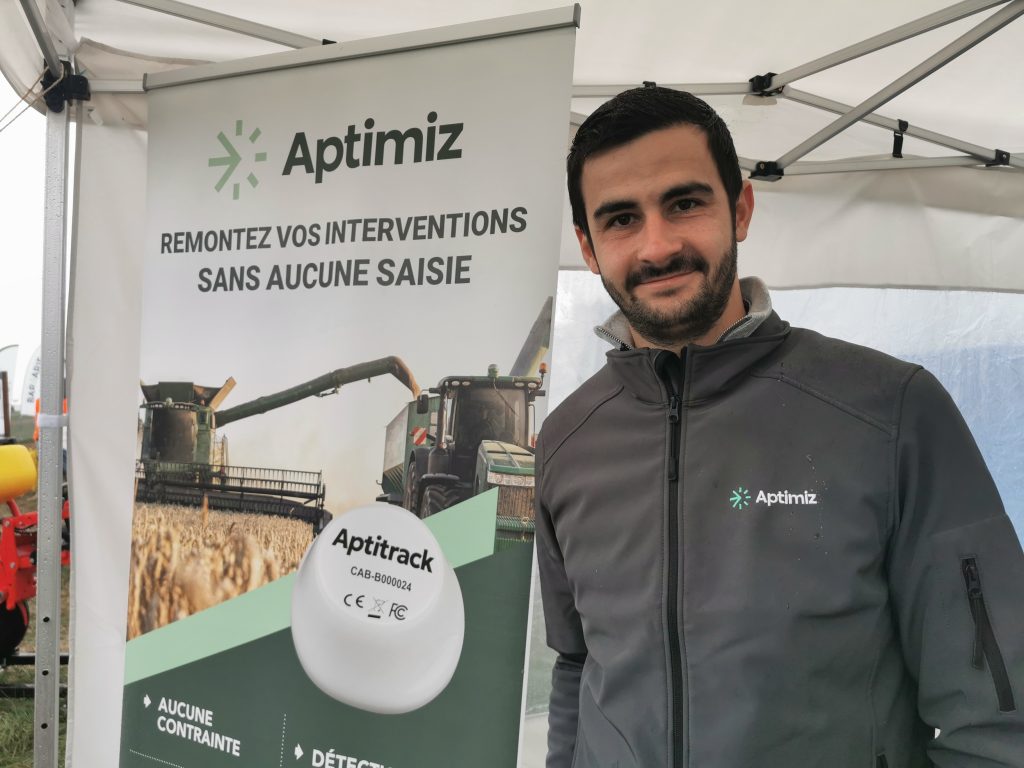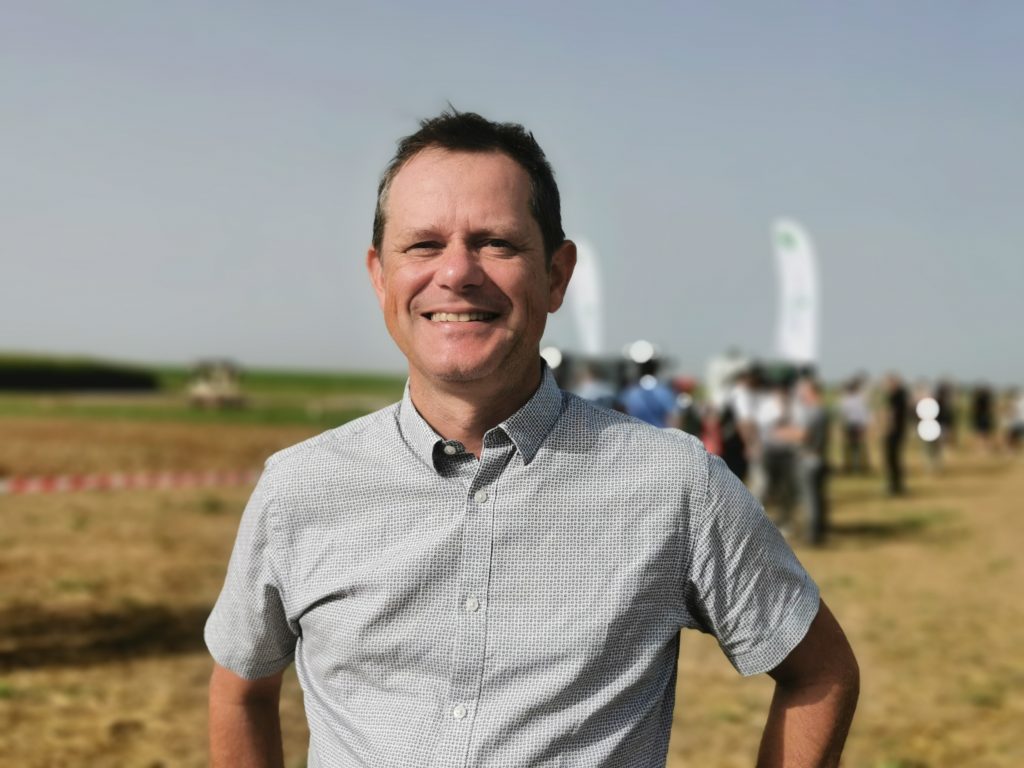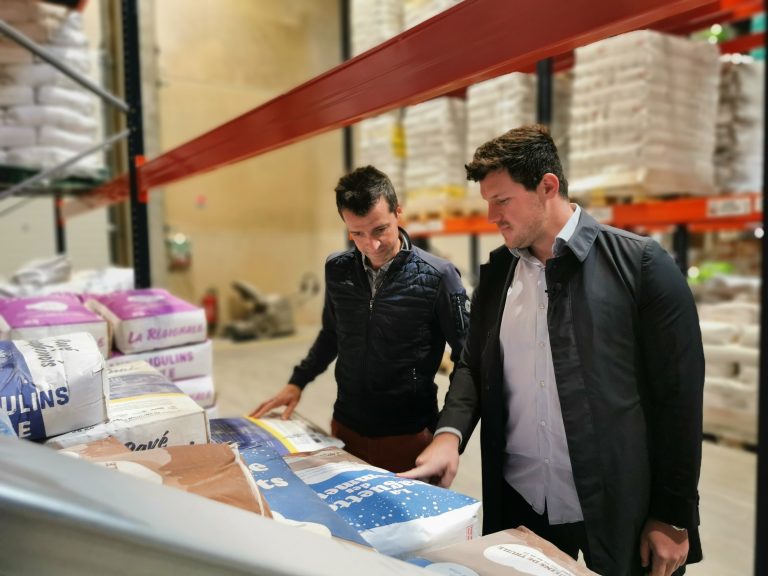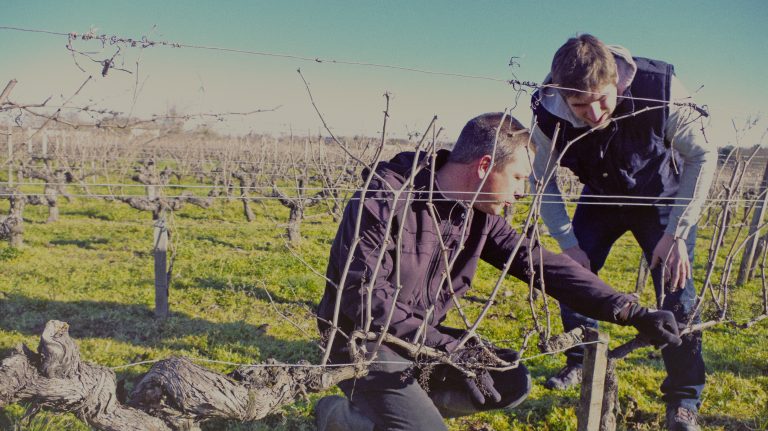Digital technology, essential for the transformation of agriculture.
As digital technology and robotics support the agro-ecological transition, this third issue of Pluriel focuses on digital technology. Testimonies gathered from the Openfield trials platform and from players in the National Research and Innovation Plan to combat beet yellows (PNRI) position it as one of the most reliable solutions for crop protection. Testing the performance of digital tools is even one of the missions of the Vitilab facility at the Vinipôle Sud Bourgogne.
Current events confirm the growing importance of connected technologies. Launched on 22 September, the Great Robotics and Digital Challenge has received €21m from the France 2030 programme. Digital technology is also part of the range of solutions in the Ecophyto 2030 plan, outlined to stakeholders on 30 October.
As well as predicting the risk of bio-aggressors, digital technology makes it easier to take account of regulatory inflation, to trace cultivation practices and to make decisions more secure. All of these factors help to reduce the mental burden on farmers. Crop protection companies belonging to CropLife Europe are devoting a budget of €10 billion to research into digital solutions. More than thirty decision-support tools or digital agronomic platforms are offered by our members’ teams. Collectively, these companies are already working on a project to digitise and standardise the regulatory data on crop protection product labels as part of the Digital Label Compliance project. This information, which can be read by agricultural equipment and accessed via an application or website, will improve the safety of product applications.
Julien Durand-Réville,
Julien Durand-Réville, Phyteis Digital Agronomy Manager
Vitilab, digital technology and robotics put to the test in the field
Vitilab joined the Digifermes network in 2023. Its teams are experimenting with the latest technological innovations and digital services in partnership with manufacturers, winegrowers and technicians.
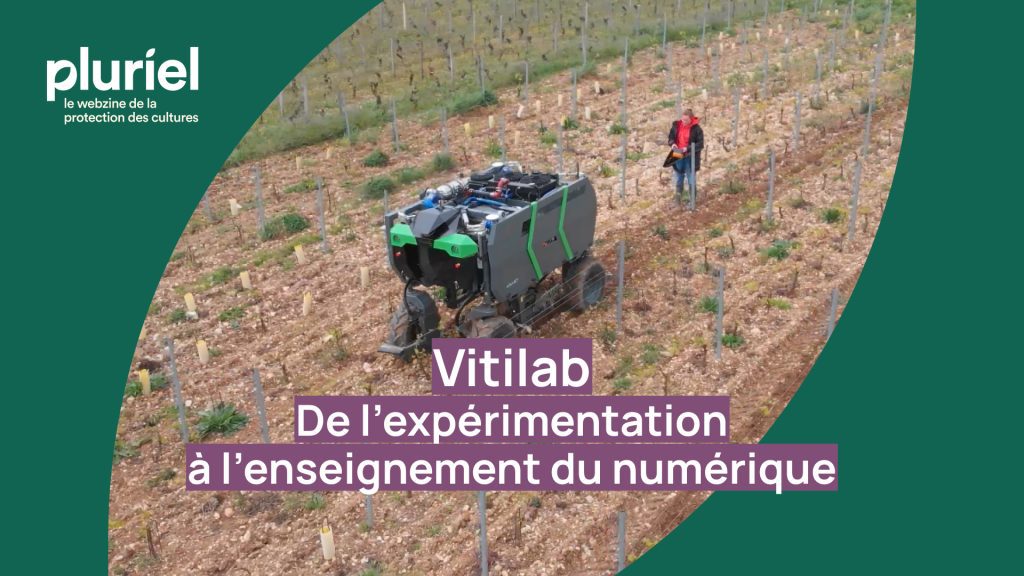
As part of Vinipôle Sud Bourgogne, a collective research and development structure run by the Saône-et-Loire Chamber of Agriculture, Vitilab aims to meet the needs of winegrowers as part of the transition to robotics and digital technology. The industry is looking for ways to make work less arduous, save time, work on slopes that are difficult to access and achieve greater precision in vine management. Innovations are entrusted to Vitilab by equipment manufacturers to be evaluated under real working conditions.
In partnership with the Institut de la Vigne et du Vin, Vitilab is developing sensors to determine leaf mass in order to adjust the dose of plant protection products to be applied. Its FabLab also organises workshops to help people get to grips with the digital world.
As a neighbour and partner, the Lucie Aubrac viticultural college in Davayé uses the Vitilab to teach students how to build connected objects and learn about innovations that reduce the environmental impact of viticultural practices. Computer science teacher David Jacquot admits: “It’s a real opportunity”.
Guided tour of the Vitilab by Guillaume Payre, Vitilab manager. Discussions with Jérémie Corsin, winegrower, Juliette Rauch, Exxact Robotics engineer, Florent Bidault, advisor to the Chamber of Agriculture and the Vitilab on plant protection, and David Jacquot, IT teacher at the Davayé agricultural college.
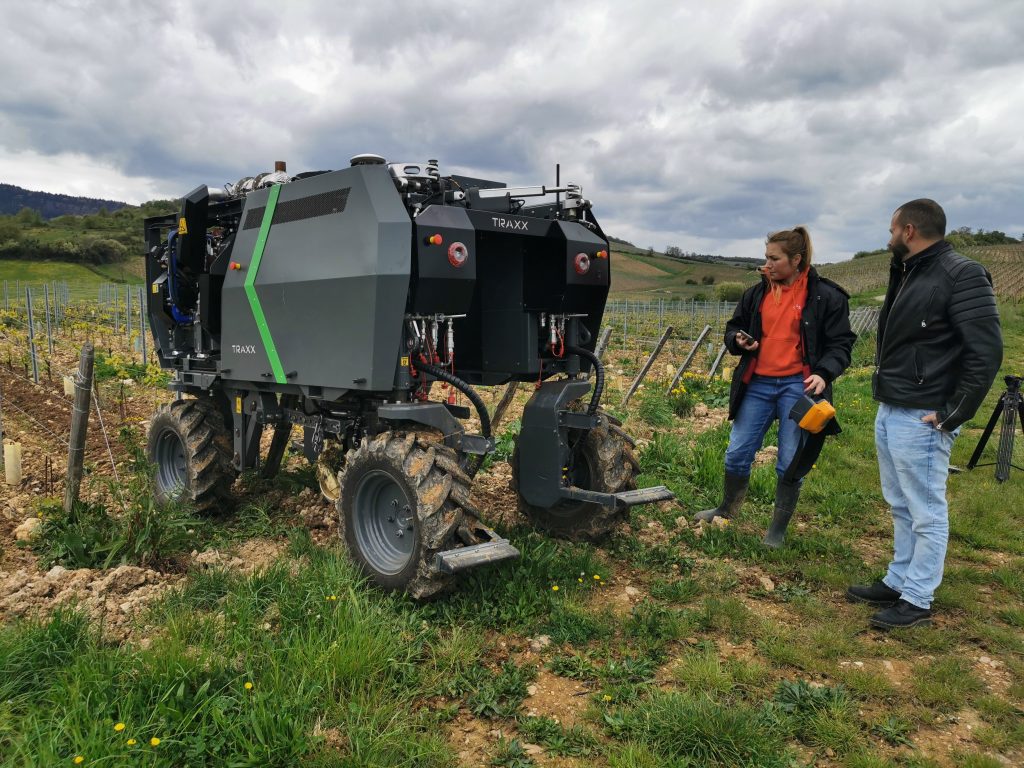
.
Weeding wheat: how to get a clean plot?
Why weed cereal plots? Why not let poppies and cornflowers dot wheat fields to colour the landscape? Weeds, whether grasses or broadleaf weeds, affect crop productivity and harvest quality.
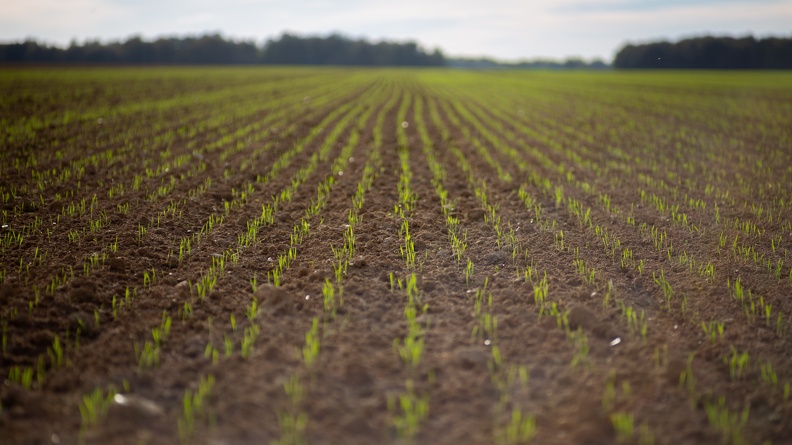
© Nadège Petit
Harmful thresholds have been identified at which the number of plants per m2 of each species results in a yield loss of more than 5%. It only takes 22 poppies or 26 vulpine weeds/m2 to have an impact on production, both in terms of yield and quality. A high level of impurity can render the crop unsuitable for consumption.
There are also indirect effects, resulting from an increase in weed seeds in the soil when these plants are not regularly controlled. For example, outbreaks of rye ergot persist on grasses such as vulpine. There is also a cost for the collector, who has to eliminate contaminants whose presence is subject to regulatory standards.
Only a combination of cultivation practices and a herbicide programme tailored to the plot can keep not only cereal fields clean, but also the other crops in the rotation.
Cultivation practices, the first herbicide!
Wheat is sown on a clean plot with a low weed seed bank in the soil. Cultural practices prepare the ground. Together with chemical weed control, they form an indissociable tandem to prevent herbicide resistance and overcome difficult situations. What are the challenges for weed control in wheat this 2023-2024 season?
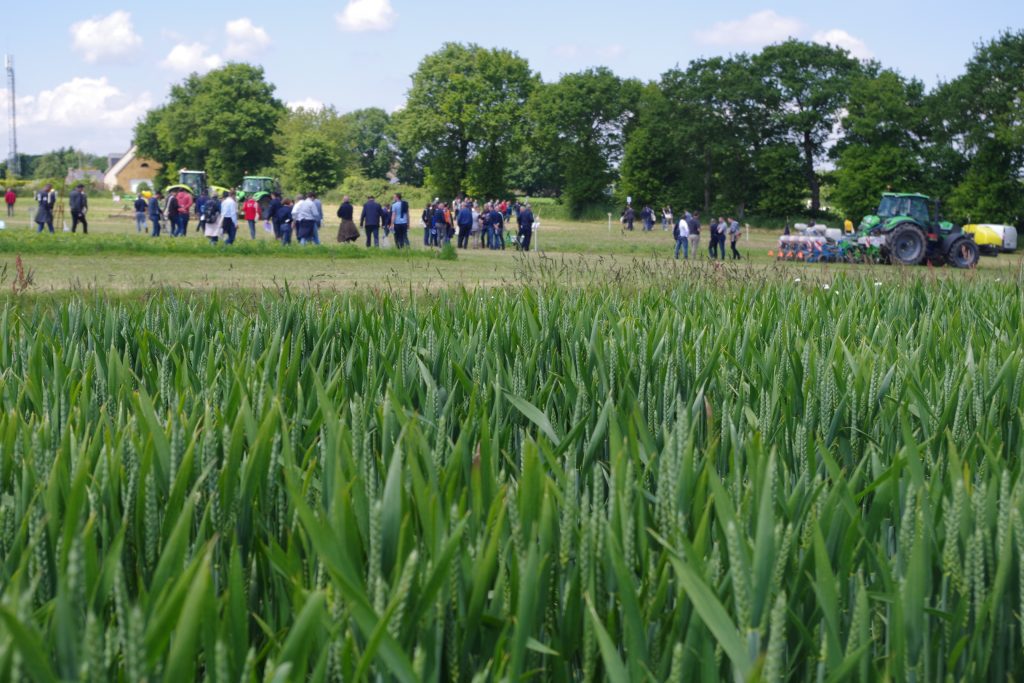
In the 2000s, weed control was essentially based on chemical methods, following the simplification of tillage and the availability of effective chemical solutions. However, poor use of the solutions available (reduced dose, repeated application) has encouraged the emergence of resistance to herbicides from the chemical families used in spring in cereals, ACCase (sub-family of Fop, Den and Dim- HRAC1) and ALS (Sulfonylureas- HRAC2). Two grasses are particularly affected: vulpine and ryegrass. To a lesser extent, the broadleaf weeds poppy, ragwort and chamomile may also show resistance to ALS herbicides.
‘Situations are very plot-specific” says Magalie Devavry, Bayer’s Herbicide Technical Manager. You can have 30% of the weed population resistant to these chemical families. In this case, using them as part of a programme, after a base applied in the autumn, always helps to reduce the seed bank. In other situations, 100% of the population is affected. In these cases, we need to rely on autumn weed control using other chemical families that are still effective“.
The trend is towards an increase in autumn applications, with pre-emergence and/or early post-emergence at 1 leaf of the wheat. This autumn weed control programme accounts for 75% of plots on average, with wide regional variations (up to 90% in the north of France for short rotations such as oilseed rape, wheat and barley). The choice of herbicide depends on the nature of the soil, the dominant flora (species, level of infestation) and the level of resistance. Resistance can be checked using laboratory tests. Any resistance to ALS and ACCase in Vulpine grass and ryegrass can be detected by analysis (qPCR and HPLC) after sampling seedlings in the field.
It is essential to diversify the active ingredients and their modes of action within the crop and throughout the rotation. This technique limits the risk of resistance developing, for example by avoiding the post-emergence application to wheat of a substance identical to that used in pre-emergence. The range of solutions has also been greatly reduced.
Obtaining a clean plot by combining cultivation practices
Regardless of how dirty a plot is, ‘all chemical’ is no longer advisable. “We rely first and foremost on agronomy, using a combination of solutions to obtain a clean plot throughout the rotation,” adds Magalie Devavry. The levers that have proved their worth include ploughing every three or four years, false seeding and staggering the sowing date where possible. According to Arvalis, up to 90% effectiveness can be achieved on high levels of Vulpine infestation (1,000 feet/m2) by simply shifting the sowing date. Two false seedings reduce a high level of infestation,” says Magalie Devavry. Combined with mechanical weed control and/or glyphosate, this is 100% effective. This technique, which involves stubble-clearing weeds and then destroying them before sowing, helps to keep plots clean in the long term.
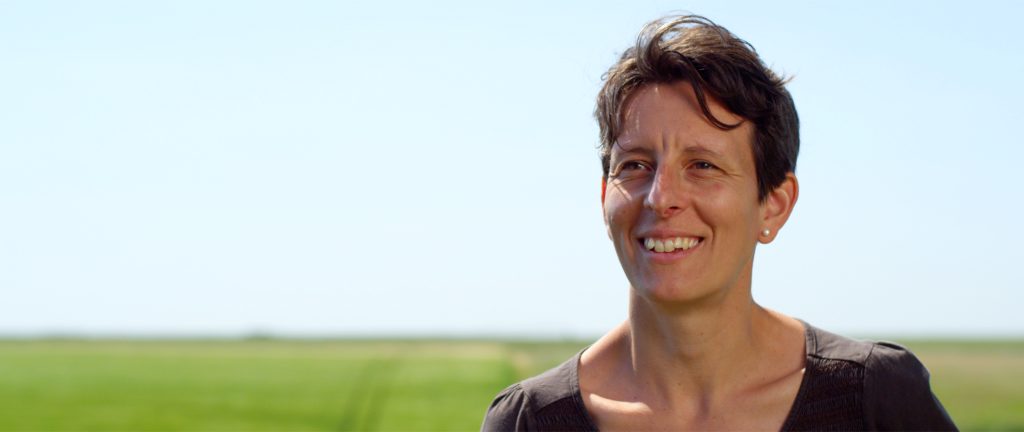
“On the Culture Champs agronomic platform in Varaize, Charente, sowing maize behind wheat reduced the level of infestation from 450 to 185 plants/m2” explains Magalie Devavry, Bayer’s Herbicide Technical Manager.
The introduction of a spring crop in a short rotation such as oilseed rape, wheat or barley is also a good way of disrupting the biological cycle of weeds that depend on winter crops, and of using other chemical families. Other avenues being explored are more complex to implement: choosing wheat varieties with good coverage to compete with weed emergence, or sowing wheat in a cover crop. In the latter case, the challenge is to destroy the cover crop at the right time in spring to “benefit from the smothering effect for as long as possible and before the cover crop competes with the wheat“, explains the expert.
As for mechanical weeding, carried out early in the autumn with a currycomb harrow or in the spring with a rotary hoe, it is still very dependent on the weather conditions. The soil must be well drained and the weed not very developed, i.e. at the filament stage for an autumn operation.
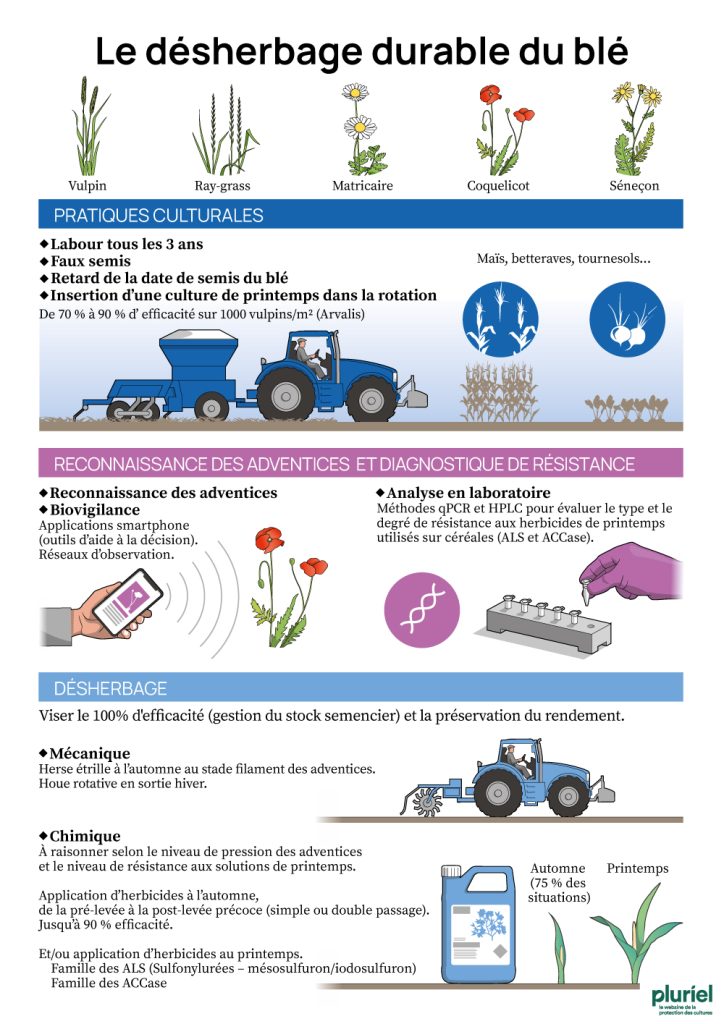
Pratiques culturales pour désherber le blé.jpg
Herbicidal active substances authorised on straw cereals
In autumn: around ten active substances.
- *flufenacet, *diflufenican, aclonifen*, prosulfocarb, chlortoluron, pendimethalin, triallate, picolinafen, beflufutamide, isoxaben…
- *These three active ingredients are used in 80% of autumn herbicide applications.
In spring: around twenty active ingredients with very different action spectra.
- Grasskillers: mesosulfuron, iododulfuron, propoxycarbazone, pyrosulam, pinoxaden, etc.
- Broadleaf and perennial weed control: metsulfuron, fluroxypyr, tribenuron, halauxifen, picolinafen, carfentrazone, clopyralid, bifenox, tritosulfuron, etc.
Weeding wheat in 2030
- Herbicide innovations will be less effective because of the toxicological and environmental criteria required by European regulations.
- Agronomic practices are essential.
- Development of mechanical and mixed weed control.
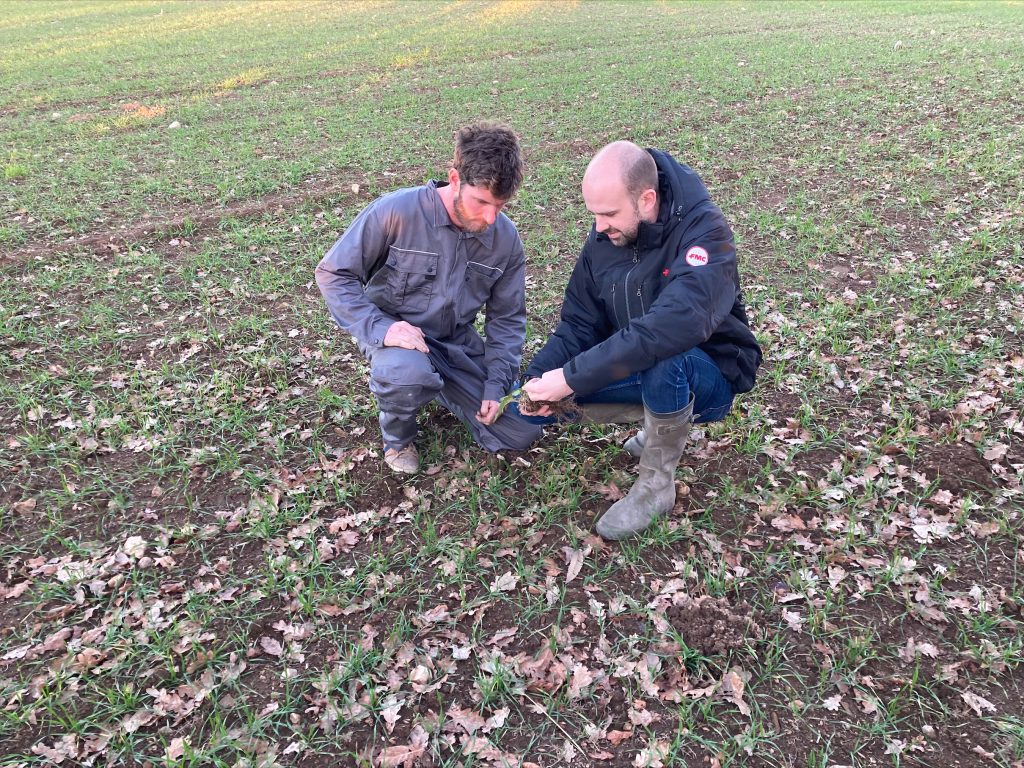
Smartphone applications such as FMC’s FlashFlore help to assess weed species at the end of winter, when plant growth starts up again.
Damien Beaujouan, farmer in Loir-et-Cher at Roches (150 ha)
Faced with excessive grass weed pressure on some of the plots he took over at the end of the 1990s, Damien Beaujouan realised that weed control strategies based solely on herbicides were failing.
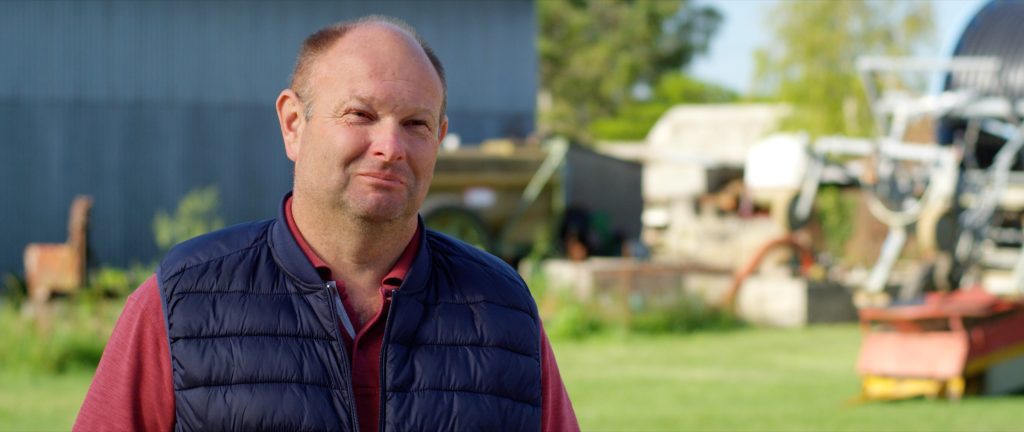
« No more chemicals! »
“In some areas, I counted up to 2,000 Vulpine weeds/m2“, he recalls. The reason: a drift in the resistance of these grasses to herbicides in the ALS family, applied in reduced doses and used as the only weed control solution at the time.
Taking advice, this farmer opted in 2008 for another tool: the soil. “The day I carried out false seeding, I saw the first improvements,” he says. A year later, the Vulpine weed population had fallen by 50%! Since then, Damien Beaujouan has carried out false seeding on all his plots after harvesting, whatever the crop. It’s a long-term job,” he insists. The key to success? “Attack the weeds as early as possible and have fresh soil,” he replies. Weeds that have just emerged are then destroyed mechanically.
Always experimenting with new agronomic practices
He gradually introduced other practices. Ploughing every three years allows the seeds to be buried. For the last 6 years, he has been shifting the sowing date for wheat and barley by 15 days. Weeds are less likely to emerge. Combining these methods is already 85% effective. He then uses mechanical weeding when the weather conditions are right: “I try the currycomb harrow to destroy just-emerged seeds. The filaments dry out in the sun“. As part of his ongoing drive for progress, the Loir-et-Cher farmer has lengthened his rotation with beetroot and maize to break the weed cycle. In May, millet was added, also sown 15 days later. The last lever we tried out was to cover the soil, favouring varieties with broad leaves to block the development of weeds. Using satellite imagery and digital technology, he modulates the sowing density of the Chevignon and Extase varieties. They are sown at 300-350 grains/m2 compared with the usual 250.
Doing without chemical weedkillers?
Drawing a line under herbicides doesn’t seem to be the solution. Chemicals finish the job of cultivation practices. You can’t have one without the other. The farmer chooses to intervene as soon as the cereals are sown. “As soon as you sow, the crop comes up, so the quicker you act, the better. That’s why I unhook the seed drill to start weeding the plot, rather than when I’ve finished all my sowing, which is 10 days later. He adds: “Without reducing the doses, so as not to repeat the mistakes of the past.”
Constance Richard, head of agronomy and innovation at the Lorca cooperative group (57)
"In our trials, we are working on a weed control strategy for wheat that combines all the available agronomic levers.
The Lorca cooperative is piloting multifactorial weed control trials at rotational level. On hydromorphic and drained soils, which are conducive to vulpine, chemical control is no longer enough.
For over three years, the agronomy department of the Lorca cooperative has been working on the benefits of staggering sowing dates in its “vulpine management” trials. Constance Richard has therefore introduced a number of rituals, including counting these weeds in November in the microplots of winter wheat and barley. There is no doubt about the difference between the plots sown around 10 October and those sown traditionally at the end of September. “In the 2022-2023 trial, an average of 98 plants per m2 were counted in wheat sown 10 days later than usual, compared with 319 in wheat sown as usual. Initially, the level of infestation was still between 600 and 1,000 plants/m2. For the past two or three years, farmers have been more receptive to this agronomic lever for managing Vulpine problems in their cereals,” she explains. As well as proving its worth, with 64% effectiveness in our trials, it leaves time to carry out one or more false seedings beforehand.
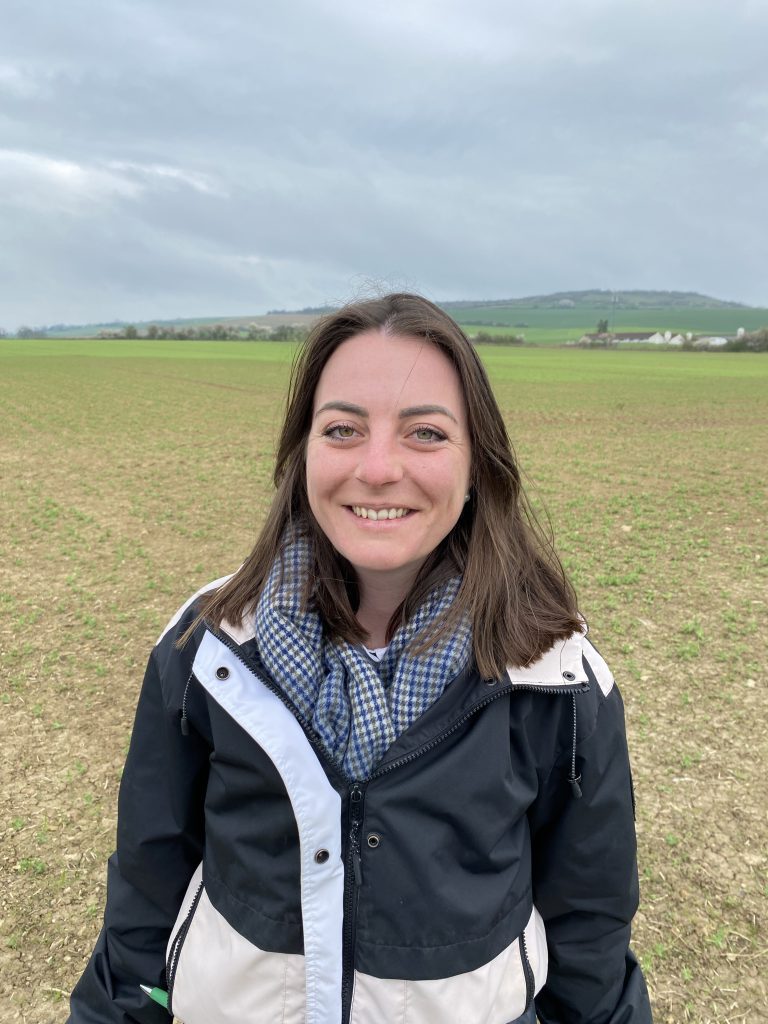
Constance Richard, Lorca
« Our trials have shown that if the effectiveness of the herbicide programme on vulpine is less than 85%, we exceed the regulatory standards for the presence of ergot in wheat grains.»
Aiming for 100% effectiveness against vulpine grass
Because most of the plots are drained, they can only be weeded with a limited number of chemicals, which increases the risk of resistance developing.
To get rid of vulpine, she believes that the weed control strategy should aim for 100% effectiveness: “Chemical weed control, even with 90% effectiveness on a heavy infestation of vulpine, is not enough! There will still be too many plants the following year“. The trend is to rely on autumn herbicides as a complement to agronomy. Interventions should only be considered as remedial solutions in extreme situations. However, the majority of Vulpine weeds in the region are resistant to ACCase inhibitors and ALS family herbicides.
Thinking on a rotational scale
For the engineer, the future of weed control lies in a funnel-shaped technical approach. In addition to a combination of targeted cultivation practices, to achieve a clean plot of land over the long term, you first need to take action on a rotational scale. Introducing a spring crop such as maize, sunflower or peas into wheat, oilseed rape and barley rotations breaks the weed cycle and allows other herbicide molecules to be used. “Introducing a summer or spring crop is now the essential first step,” she stresses.
Science – CropLife Europe unveils the results of its study on three Closed Transfer Systems
In order to obtain robust data on the level of protection afforded to farmers using three Closed Transfer Systems (CTS) for plant protection products, a study was carried out in real-life conditions in autumn 2021 under Good Laboratory Practice (GLP). Presentation of the results, which will soon be the subject of a scientific publication.
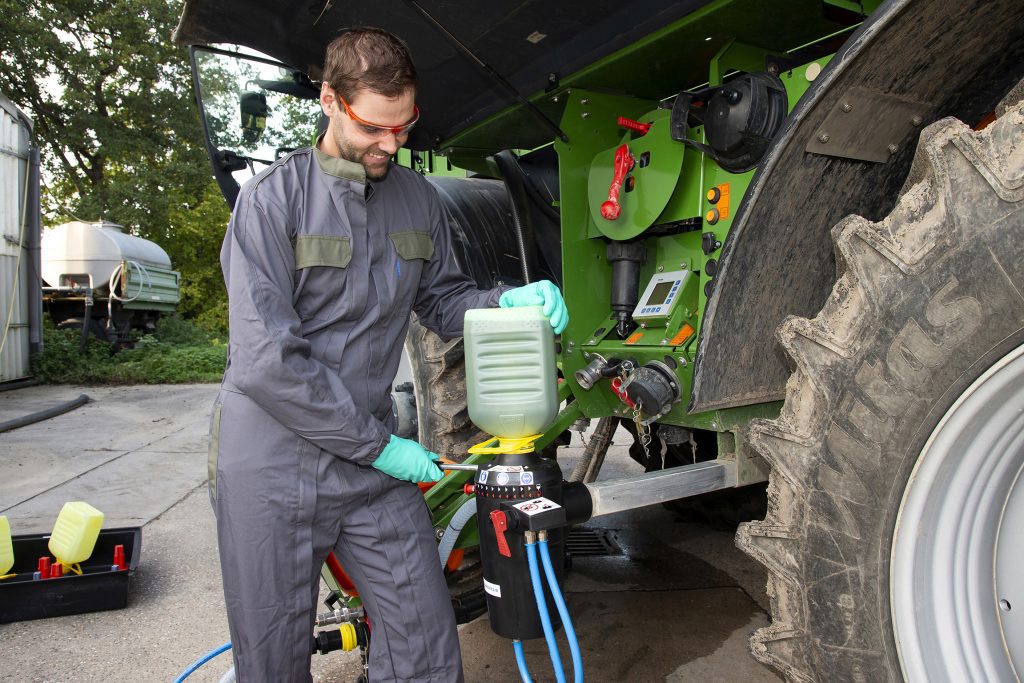
What is the level of protection provided by the three Closed Transfer Systems easyconnect, EasyFlow® and GoatThroat ® when farmers are faced with a sustained rate of sprayer loading? These devices have already passed the tests required to obtain the ISO 21191/2021 standard for STFs,” explains Julien Durand-Réville, Health and Prevention Manager at Phyteis. However, the precise calculation of the effectiveness of these systems in protecting operators had not yet been established. We also wanted to collect data from real-life situations.
The raw data from the GLP study, initiated by CropLife Europe and validated by a third party, were submitted to the European Food Safety Agency (EFSA) in July. A peer-reviewed scientific publication is being written this autumn to give wider access to the results. The European agencies responsible for assessing plant protection substances in each country will then be able to use these applicator protection values when defining the safe conditions for applying products.
Easyconnect, supported by 13 crop protection companies, is being rolled out
Easyconnect is the system chosen by 13 crop protection companies. It consists of a connector attached to the sprayer and a special cap. Between now and 2030, companies will gradually be equipping their liquid product containers (from 1 to 20 litres) with this adapted cap. By preventing incidents and splashes, easyconnect contributes to the safety of farmers and protection of the environment,” says Marie Luciot, Regulatory Affairs Manager at Adama. The study revealed major benefits: significantly improved safety, with a reduction in exposure of around 98%; no odours; and faster, more efficient work during the canister loading and rinsing phases.
In order to roll out the range, the companies are open to all kinds of collaboration with other connector manufacturers, “provided we can get our farmer testers to try out the future equipment under real conditions”, explains Vincent Jacus, who is in charge of the easyconnect dossier for BASF Agro. Similarly, it must be possible to adapt the connectors to sprayers universally, “whatever the brand and type of machine”.
Companies in other sectors of the agricultural supply industry, notably liquid fertilisers and biofertilisers, are said to be interested in the system and could also join the initial group.
Up to 99% reduction in exposure to plant protection products
All three systems show a significant reduction in operator exposure compared with the reference values derived from the European assessment model, the AOEM (Agricultural Operator Exposure Model) used by EFSA. For easyconnect and EasyFlow®, the potential reduction in exposure compared with the AOEM is between 98.3% and 99.6% (depending on the percentiles and the two formulations used).
For GoatThrow®, the reduction in exposure was between 72.6% and 93.2%. This discrepancy may be explained by the fact that the GoatThroat® system requires containers to be cleaned manually by shaking, and by the fact that the system requires a rigid hose to be immersed in and removed from the container.
If we combine the use of STF and PPE, the reduction achieved by the three systems is similar, and comes close to preventing operator exposure altogether,” explains Julien Durand-Réville. It’s really effective in real life.
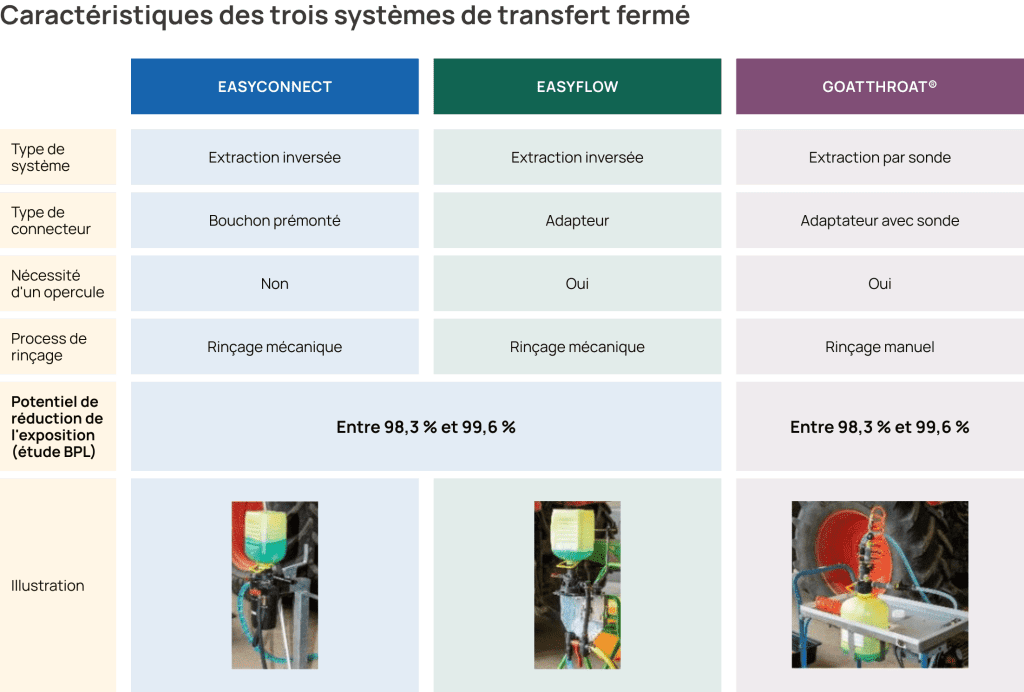
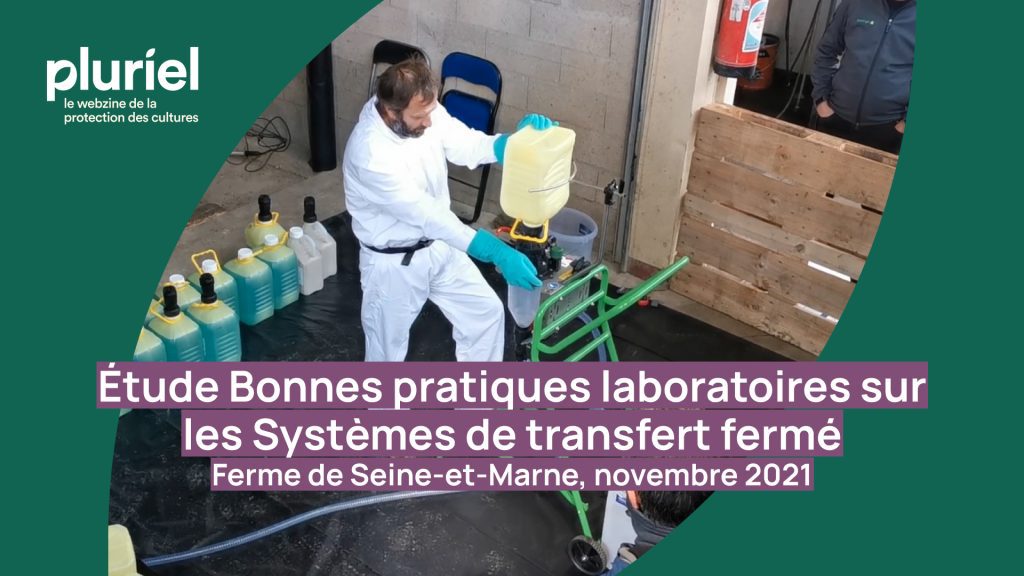
- 4 European countries involved: Germany, Netherlands, France and Spain
- 3 closed transfer systems tested, each with 2 formulations (one highly viscous, the other highly liquid)
- 972 filling operations carried out by twelve operators were traced in the European study
- 27 drums handled for each of the three STFs
- The personal protective equipment (PPE) and collection undergarments used were carefully cut up and analysed to detect any traces of residue on the PPE and even under the PPE (to study the cumulative effect of the use of a STF and PPE).
Science – Combination solutions for beetroot yellows are becoming clearer
The second phase of the National Research and Innovation Plan (PNRI), set up in 2020 to combat beet yellows, is exploring new avenues of research. Presentation of these solutions by players in the PNRI at the Betteravenir trade show, held on 25 and 26 October at Berny-en-Santerre in the Somme region.
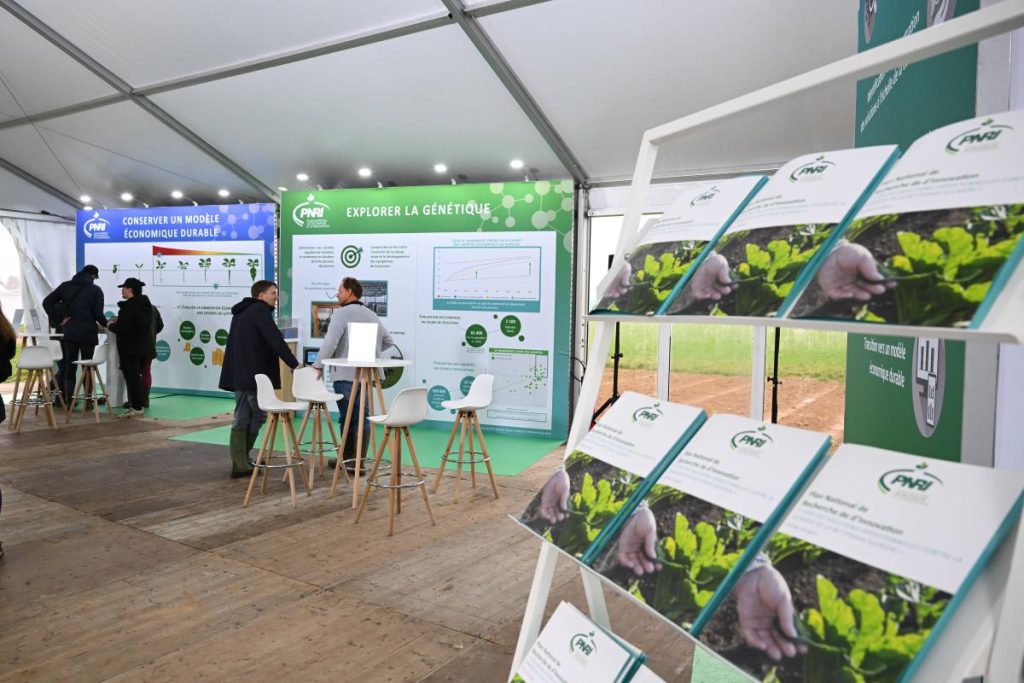
A collective feat leading to a paradigm shift in the protection of a crop against a bioaggressor, the PNRI prefigures the new way of working supported by the French government as part of the Ecophyto 2030 Plan. “We’re building both the destination and the trajectory, so it’s another very interesting way of doing things”, explained Christian Huyghe, Scientific Director of INRAE and the PNRI, on 25 October at the Betteravenir trade show, before Marc Fesneau, French Minister for Agriculture, announced the extension of the PNRI for a further three years.
In this research programme, the “one problem, one solution” approach no longer applies. Instead, a combination of levers is emerging. It is based on agronomy, genetics, sowing companion plants, digital risk prediction, biocontrol, regulation with auxiliary insects, and as a last resort, foliar insecticide protection.
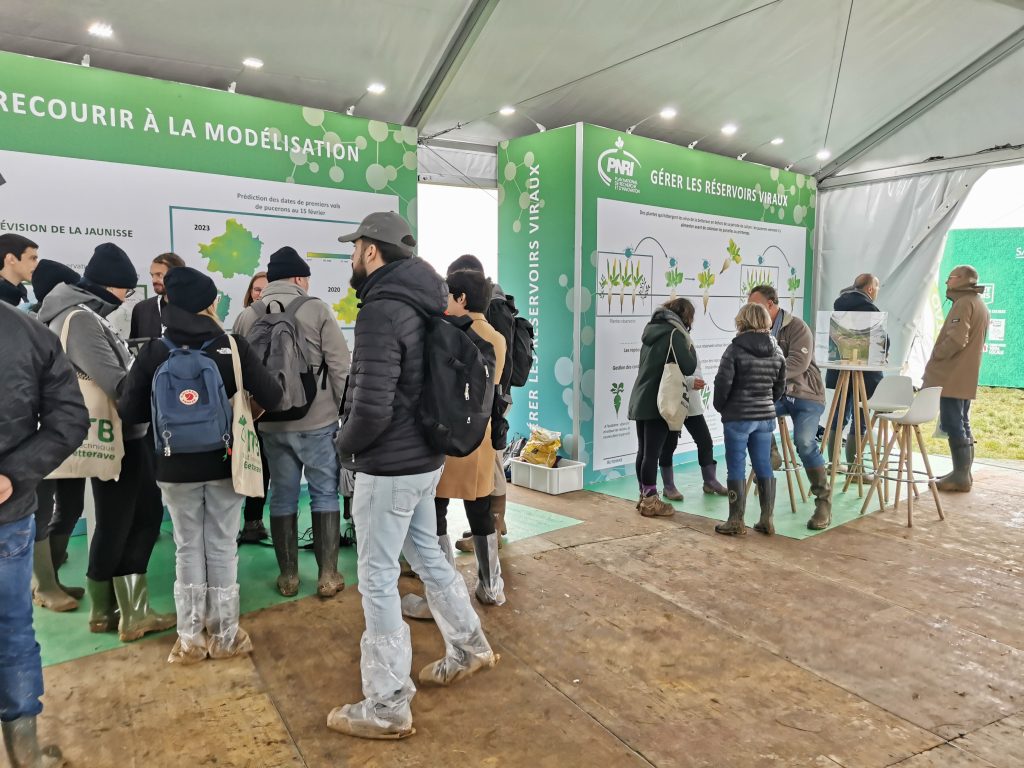
At the Betteravenir trade fair, discussions with PNRI partners on the solutions being tested to control aphids carrying jaundice viruses, limit virus reservoirs, predict risk or improve the tolerance of beet varieties.
Limiting reservoirs of jaundice viruses and aphids
Researchers are doing some real detective work to understand the multiplication of viruses and aphids and the mechanisms of infection. They are identifying the numerous host plants in the beet plots. “Trying to manage them all is complicated“, explains Jean-Christophe Simon, a researcher at Inrae chercheur. The most obvious reservoir remains beetroot.
“We have detected the presence of viruses in samples of beet seedlings growing in the digging rows. The beet regrowth in the cereal plots is also infected. Systematic burial of root residues and chemical weed control are proving effective. Characterisation of other host plants is continuing.
Yellow dwarf tolerant beet varieties
Expectations are high when it comes to genetics. Every year, around a hundred beet varieties inoculated with the jaundice virus are evaluated by Geves with a view to their inclusion in the catalogue. To measure their tolerance of this disease, they are compared with an untreated control and a second, uninoculated control protected with a foliar insecticide. Sugar yields also need to be measured to keep these varieties in the running.
- 61,400 microplots of sugar beet variety trials in 2023
- 107 varieties inoculated with a cocktail of viruses, 139 with monoviruses
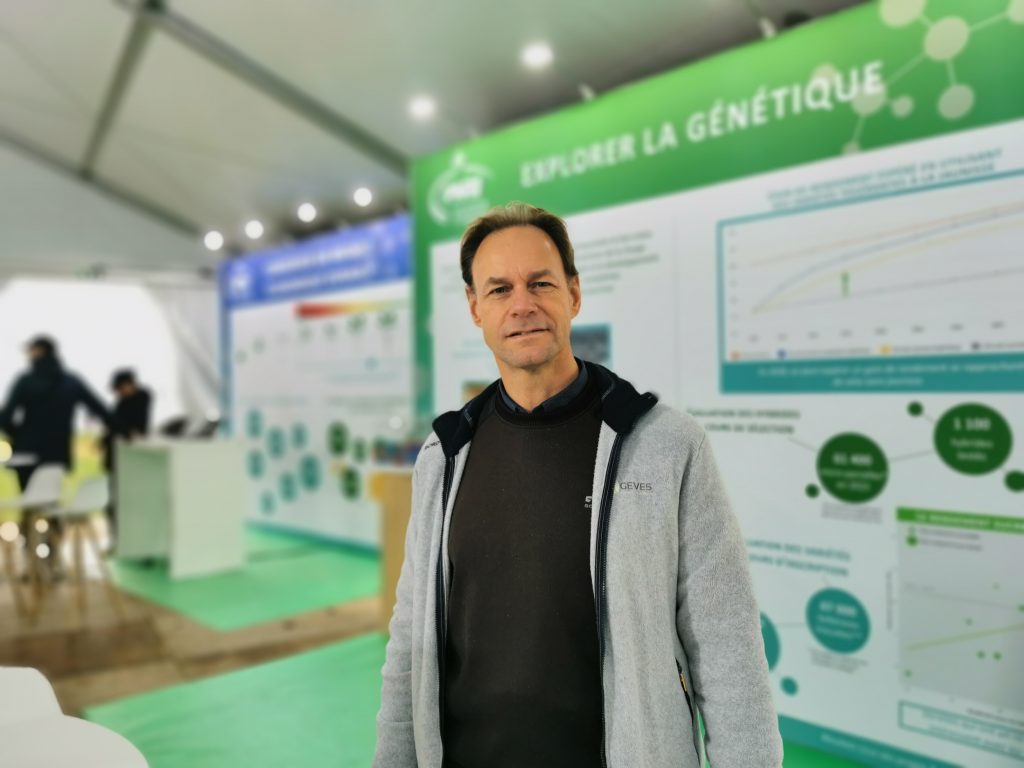
“Between varieties, we observe a variability in response,” explains Denis Beghin, technical secretary for beetroot and industrial chicory at Geves. But what counts is the trend, and the genetic response is improving over the years. By 2028, we should have a good compromise between tolerance to yellows and yield.
Solutions to control aphids
Sowing beet companion plants
Among the research projects to be pursued as part of the second phase of the NIRP are those that disrupt apterous green aphids. Rough oats or spring barley sown before beet could create a physical barrier as well as a repellent effect against these insects. By sowing barley or oats in the field, close to the beet, it is possible that the disruptive effect will be stronger than by positioning them in the inter-row, but these grasses then enter into more competition with the beet,” points out Quentin Tilloy, deputy head of Cristal Union’s agronomy department. They should therefore be destroyed before June to avoid compromising yield.” Barley positioned between the rows can be destroyed by mechanical weeding. All that remains to be done is to fine-tune the technical itinerary, assess the attractiveness to beneficials and combine companion plants with other levers before deploying this technique.
Effectiveness in PNRI trials:
- Oats: 36% reduction in aphids and 34% drop in yellows symptoms symptoms.
- Spring barley: 33% reduction in aphids and 31% drop in yellows symptoms reduction in jaundice symptoms.
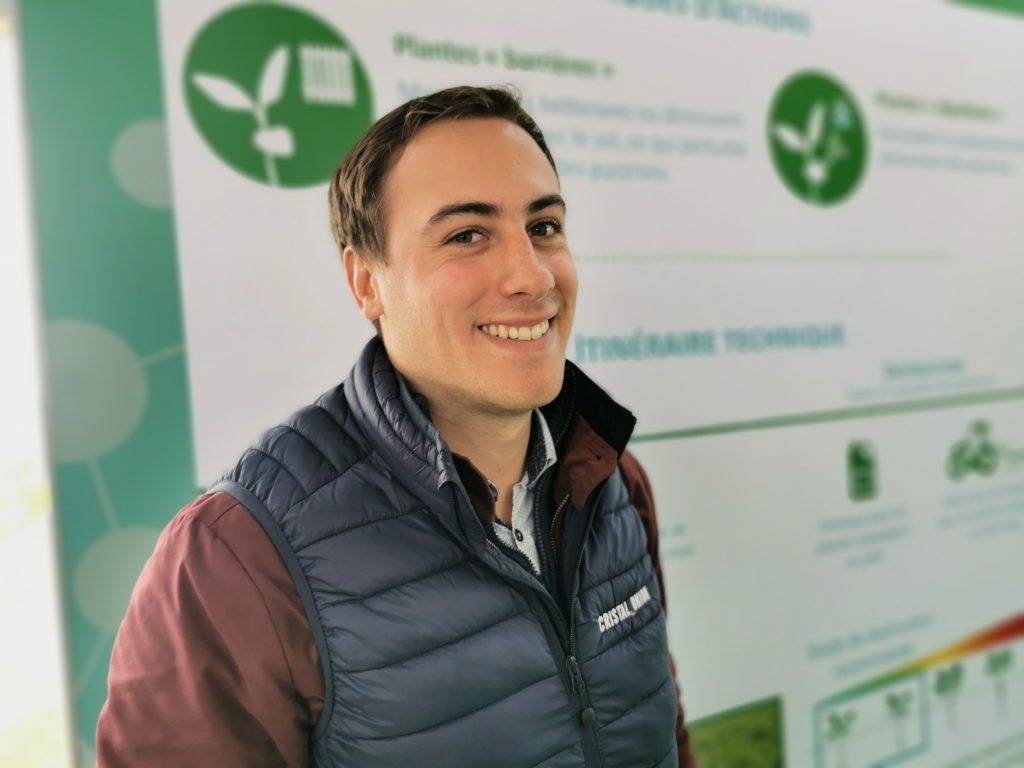
Quentin Tilloy, Agronomy Department, Cristal Union sugar refinery: “In a technical itinerary with a companion plant, you have to put into perspective the reduction in aphid pressure, competition with beet, the cost of planting, the constraints for the farmer with two sowings and the risk of additional weeding“.
Lâcher d’insectes auxiliaires et création de zone de conservation naturelle
Flower strips are home to natural auxiliary insects: syrphid flies, carabid beetles, ladybug beetles… To increase aphid predation levels, If-Tech is working with the Institut Technique de la Beave (ITB) to find a method for introducing lacewings on a large scale. The larvae devour up to 50 aphids a day, and are active for 3 to 4 weeks. The adults then fly to the flower strips to complete their life cycle.
Formulated with a powder, the eggs are applied at a rate of 20 to 40 eggs per m2 using precision DPS 12 equipment tested with the ITB.
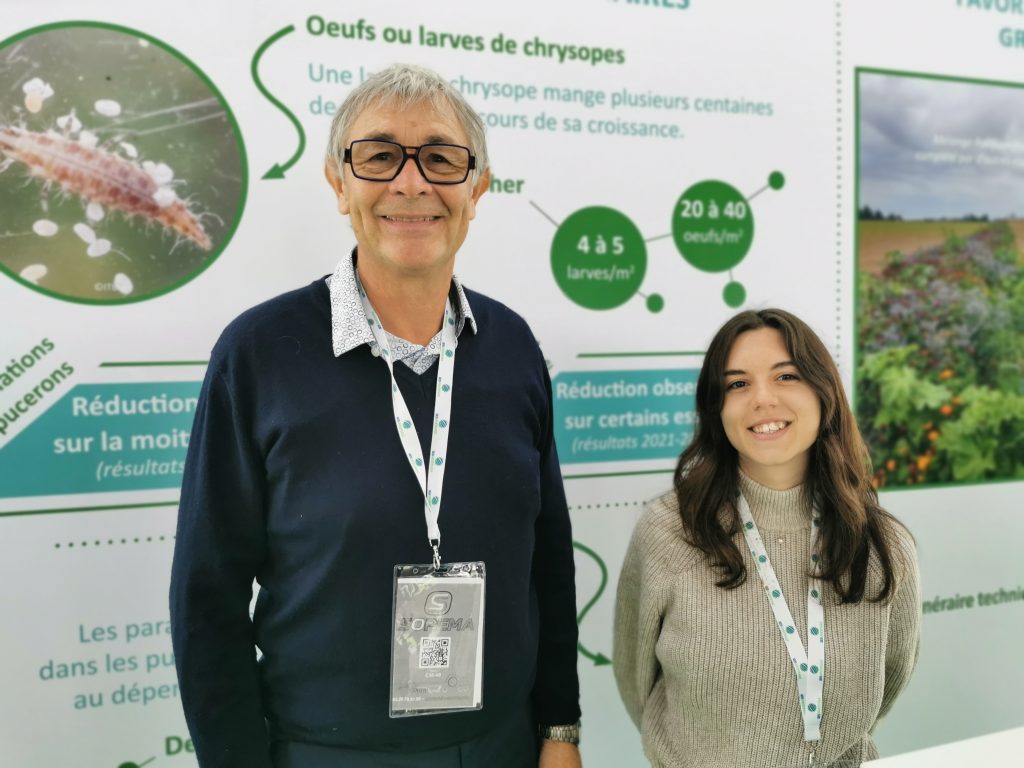
Christian Heckeur, CEO of IF-Tech, a company specializing in biocontrol solutions based in Pont-du-Cé (49), with Kimberley Menard, experimentation manager. They report good results from positioning lacewing eggs in the heart of the beet. Efficacy levels have yet to be confirmed.
Biocontrol with chemical mediators, kerosene oil and parasites
One avenue explored in biocontrol involves chemical mediators. A natural miscible substance attracts natural aphid predators to the beet crop earlier. It can be applied in two spray passes.
Another chemical mediator tested in the PNRI: allomones. These natural plant fragrances interfere with aphid perception and development.
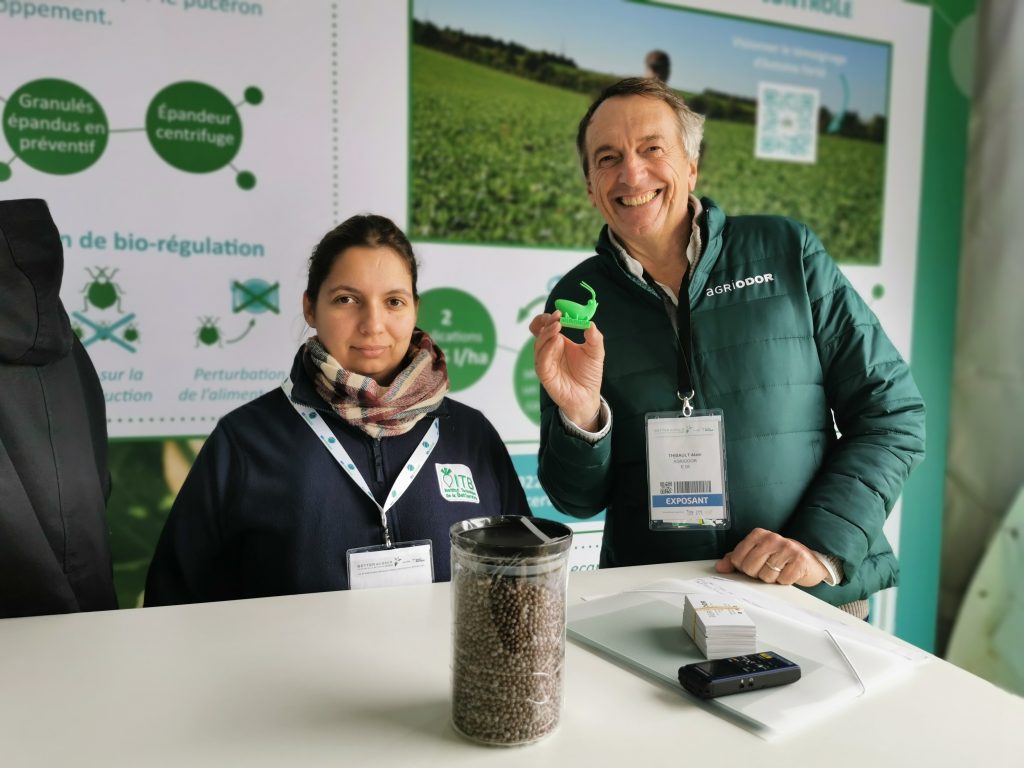
Agriodor has developed granules that emit odors that disturb aphids. These granules are applied at the 2-3 leaf stage of the beet. The residual effect is 28 days. “We hope to obtain marketing authorization (AMM) in 2025“, says Alain Thibaut, CEO of Agriodor. On his right, Amélie Monteiro of ITB, PNRI project leader for biocontrol product evaluation.
As for kerosene oil, it reduces the aphid population by almost half. The effects observed concern the insect, but also the transmission of the virus. Finally, the Lacanicillium muscarium micro-organism, which attacks aphids, eliminates them by an average of 40% 15 days after treatment. It was tested alone, in a mixture with an insecticide and in combination with companion plants. Kerosene and Lacanicillium are not registered for use on sugar beet.
Practices – OpenField trial platform: an ecosystem for agricultural transition
On June 13, 2023, the Openfield multi-annual test platform was visited. Unique in France for its size and its openness to different agronomic and technological disciplines, it serves as a reference and training center for distributors and farmers.
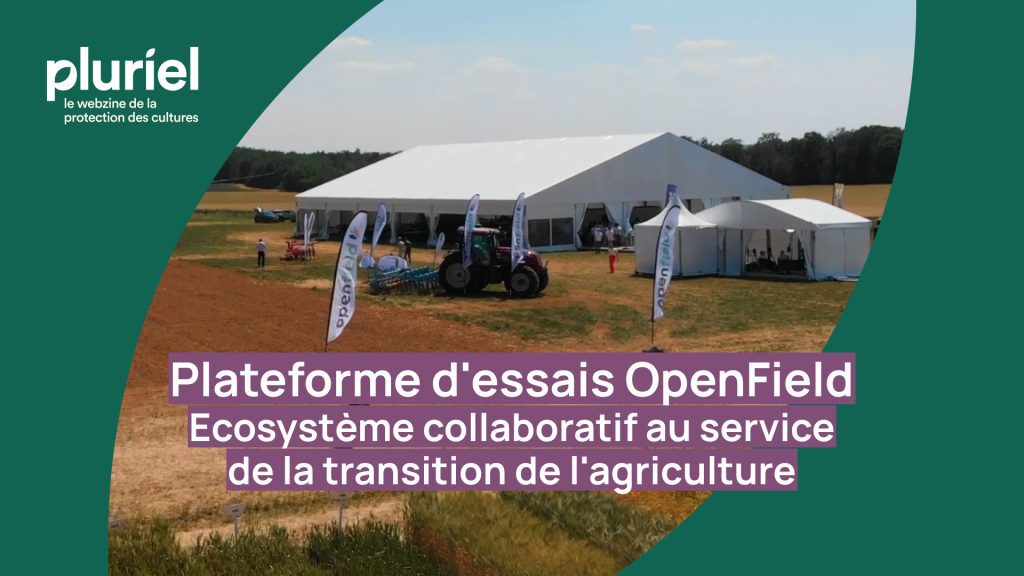
Run by the Bioline by InVivo network (Bioline, Phyteurop, LifeScientific, Semences de France, Smag, BeApi…), Openfield is located on 13 ha near Milly-la-Forêt in Essonne.
In addition to the members of this network, the platform hosts 23 technical partners from the fields of robotics, digital farming, spraying, irrigation, soil life, biodiversity and agri-food.
It is divided into five five-year rotations emblematic of France’s agricultural regions. For each rotation, the Bioline network team is testing solutions for low-carbon agriculture, soil conservation agriculture and reducing the Treatment Frequency Indicator (TFI). Reflecting societal expectations, these itineraries are compared with those of conventional agriculture. The main finding for 2023: a reduction in the Treatment Frequency Index of between 20% and over 50%, depending on the crop, with a concomitant drop in production costs.
Six sustainability indicators assessed at Openfield
- IFT: Indicateur de fréquence de traitement (treatment frequency indicator)
- CEPP: Certificat d’économies des produits phytopharmaceutiques (phytopharmaceutical products savings certificate)
- Production costs
- Greenhouse gas emissions
- Carbon storage
- Soil regeneration
Regulatory – Deciphering the main legislative texts and projects in Europe and France
The global strategy of the Ecophyto 2030 Plan is taking shape. It is subject to consultation with stakeholders until the end of November. At European level, the timetable is accelerating to finalize the draft regulation on new genomic techniques (NGT) in 2023.
Europe
NGT, the negotiation timetable tightens up
While the Spanish Presidency of the European Council is making great strides with the Member States on the draft regulation on new genomic techniques (NGT), votes in the Agri and Envi Commissions are scheduled for December 11, 2023 and January 11, 2024 respectively.
On July 5, the European Commission published its draft regulation on two genomic techniques: genome editing and cisgenesis. Two categories of NGT plants have been identified, each with its own specific assessment procedure. Category 1 would include plants that are equivalent to those that can be obtained by conventional breeding. If they meet the equivalence criteria, they are exempt from the requirements of GMO legislation. The text makes no provision for mandatory labelling. However, seeds would be labelled “NGT”.
For category 2 NGT varieties, the requirements of current GMO legislation would apply, with certain adjustments.
Withdrawal of active substances
The marketing authorization (MA) for glyphosate expires on December 15, 2023. Following a scientific evaluation process, EFSA concluded in July that the active substance glyphosate met all the criteria for renewal, as set out in Article 4 of the European Regulation concerning the placing of plant protection products on the market. The twenty-seven countries are due to vote again on November 16 for its renewal, as no qualified majority was reached during the October 13 vote.
As proposed by the European Commission, Member State experts agreed on October 13 in Brussels not to renew the marketing authorization of three plant protection products: S-metolachlor, benthiavalicarb and metiram. The marketing authorization for S-metolachlor (a sunflower and corn herbicide), which was extended in June, will expire on November 15, 2024. Metiram, a mildew fungicide, will no longer have a license as of January 31, 2024. The license for another mildew fungicide, benthiavalicarb, expires on November 15, 2024. On the other hand, the renewal of the marketing authorization for ethephon, a cereal growth regulator (originally scheduled to expire in November 2024), has been approved.
Revision of water legislation
On September 12, MEPs adopted the report on reducing groundwater and surface water pollution and improving water quality standards in the EU. Among the document’s proposals is a review of the 0.1 μg/L and 0.5 µg/L groundwater quality standards for each active substance and for several detected substances.
France
Ecophyto 2030 global strategy
The Ecophyto II + plan expires in April 2024. The Ecophyto 2030 plan will take over from it. In its presentation of the overall strategy on October 30 to members of the Comité d’orientation stratégique et de suivi (COS) Écophyto, the French government confirmed its ambition to reduce the use of plant protection products by 50% by 2030 compared with the period 2015-2017. The new approach aims to accelerate the development of alternative solutions and plant protection products with more favorable eco-toxicological profiles, in anticipation of the withdrawal of certain active substances. The sectors are finalizing the identification of endangered uses, with a view to presenting their plans in December.
The French government intends to give priority to strategies involving the search for alternative and combinatorial solutions. It also wants to massively promote agro-ecological practices. Also included in the plan is the issue of protecting the domestic market from products that fail to meet environmental standards.
COS members have until November 30 to share their comments. At the same time, other bodies will be consulted. The new strategy is due to be finalized in January 2024.
Ecological planning
On September 25, Emmanuel Macron presented the main thrusts of his ecological planning, designed to enable France to reduce its net greenhouse gas emissions by 55% by 2030 compared to 1990 levels. The President of the Republic recalled all the variations of ecological planning, of which the biodiversity strategy is a part, along with the main priorities. On agriculture, Emmanuel Macron emphasized his determination not to leave farmers without crop protection solutions, and to reduce dependence on glyphosate by 30%, with a particular focus on the risk of over-transposition.
Restriction of use for prosulfocarb
The European Commission has set itself until January 31, 2027 to re-evaluate prosulfocarb, a herbicide used on cereal and potato crops. For its part, the French Health Safety Agency (Anses) has issued restrictions on use, applicable from November 1, 2023. Products registered at 5 l/ha are to be used at a rate of 3 l/ha; those registered at 3 l/t, at 1.6 l/ha. On straw cereals, application must not exceed the BBCH 13 (3-leaf) stage on these crops. No change on potatoes. The safety distance from neighbours is now 20 metres. If nozzles reduce drift by at least 90%, this distance can be reduced to 10 m.
How does digital technology lighten the mental load?
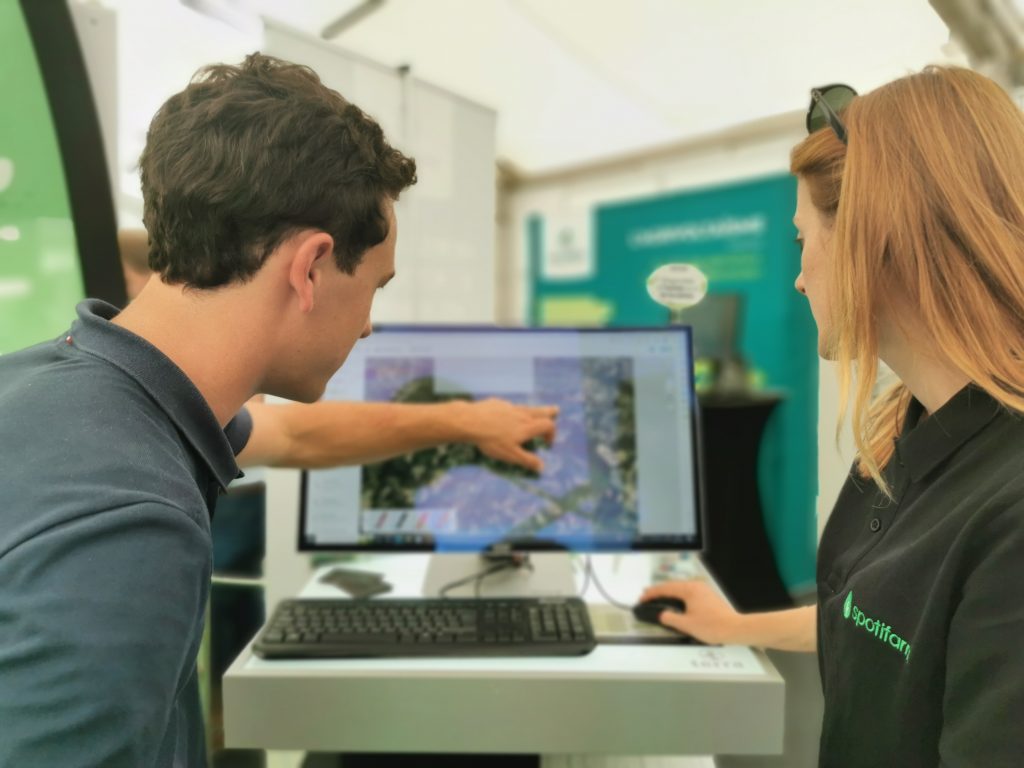
Think of everything and sometimes its opposite! Anticipating the unpredictable. Being a farmer means skilfully juggling the constraints imposed by the living world, regulations and the vagaries of the market, while ensuring the productivity of your business. Productivity remains the sinews of war, the major challenge.
So, yes, digital technology helps to achieve this objective, above all by supporting the entrepreneur in his decisions. This digital agronomic assistant pre-digests the regulatory millefeuille, which is quite a weight off the entrepreneur’s mind! Digitalization brings farming communities closer together, facilitating exchanges and knowledge sharing. In this issue, you’ll discover the vision of digital and robotics players on the benefits brought by digital technologies, and the challenges to be met in order to deploy their adoption.
Saving time and reducing risk with digital agronomy
How does digital agriculture fit into farmers' daily lives? In addition to the computational power of models to predict the appearance of pests and diseases, digital technology is bringing new services. Among the most eagerly awaited: secure decision-making and optimized working time.
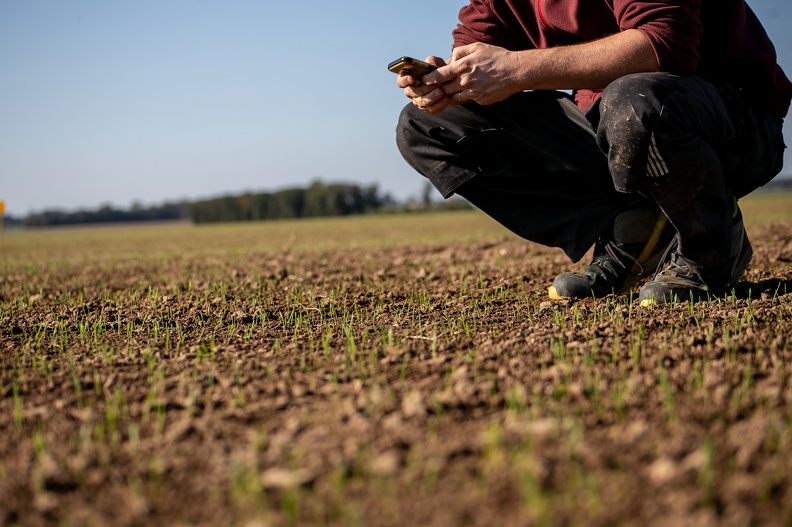
© Nadège Petit
“Having the freedom to act, to free oneself from a multitude of tasks in order to concentrate on one’s core business, has become a major challenge“. For Thierry Desforges, a farmer in the Essonne region of France and the FNSEA’s digital agriculture referent, climate change is revolutionizing the way we approach our business and the way we organize ourselves. We’re experiencing increasingly severe and violent weather episodes, so we need to be able to adapt quickly,” he explains. In the past, we knew that a given period of time meant a given number of interventions. Now, a fortnight of rain can be followed by three months of drought, requiring us to be constantly on the alert, questioning our choices and… our crop treatment periods!”
Is better anticipation of the weather the key to controlling your schedule? But that’s not all. Added to this are the uncertainties of a profession that works with living organisms, crumbling under regulatory constraints and confronted by the sometimes contradictory demands of society. As a good agronomist, the farmer must constantly be on the lookout for innovations. “You never see a farmer who isn’t in a hurry, who doesn’t have thousands of things to think about“, observes Paul Brillault, in charge of precision agriculture and digital projects for the Eure-et-Loir Chamber of Agriculture.
For this advisor, when faced with such a mental workload, the primary benefit of digital technology lies in saving time while ensuring that the right decisions are made.
Paul Brillault takes the example of Optiprotech and MesSatimages, integrated into the MesParcelles platform offered by the Chambers of Agriculture.
Digital models include safety margins in their predictions,” he adds. They digest and refine information linked to the crop, to the behavior of varieties, to the plot, to weather data, to then facilitate the choices to be made“.
Digital agronomy assistant, an eye on every plot
Digital tools are taking on the role of agronomic assistant. Satellite imagery, connectivity between technologies, sensors and artificial intelligence make all the difference on their CVs. The helping hand starts with plot monitoring. For example, Isagri’s Spotifarm software includes an application for digitally surveying plots to save time. Satellite imagery detects problems such as emergence, disease and game damage,” explains Spotifarm’s Ralista Arsova. It also changes the angle of vision, thus complementing human-level observation.
For Thomas Collet, Head of Xfarm France, a farm management platform: “Monitoring via sensors positioned in the soil and traps equipped with pest recognition cameras meets the need to optimize work. The resulting prescriptions are more precise in terms of fertilizer, water and phytosanitary product requirements.
In the event of proven risk, modelling the evolution of bioaggressors makes it possible to apply products at the right time, including biocontrol products. The latter, with their early curative mode of action, need to be positioned at the onset of contamination or attack. In fact, 80% of the 549 cereal growers surveyed by Contrat de Solutions in 2022 agreed on the usefulness of Decision Support Tools (DST) for managing cereal fungicide protection. Among these cereal growers, 63% mainly use five tools: xarvio® FIELD MANAGER (BASF), Avizio (Syngenta), Isagri solutions, Top Septo (Arvalis) and Optiprotect (MesParcelles). In France, again according to Contrat de Solutions, an average of 10-20% of fungicide applications on wheat are saved thanks to OADs. Expectations are high: a DAO has to be as complete as possible,” says Clotilde Bois-Marchand, project manager in charge of deploying Contrat de Solutions. We also feel that farmers need time to evaluate a digital solution.
Digital agronomy solutions offered by Phyteis members
From agronomic intelligence platforms to tools for monitoring pest populations and developing phytopharmaceutical treatment programs, Phyteis members offer 34 digital solutions.
AGRONOMIE DIGITALE - Les outils numériques proposés par les entreprises de protection des plantes adhérentes à Phyteis.pdf
Digital technology streamlines worksite organization
Another constraint for a farmer is to organize work sites with employees and ensure that they run smoothly, in line with technical and regulatory guidelines. An application, Aptimiz, has even been specially designed to compile the number of hours allocated per task, per zone, per person and per machine, to better plan the work.
Tractor self-guidance by geolocation, coupled with intra-parcel dose modulation, also addresses this organizational issue. The machine receives a file with the precise quantity of product or fertilizer to be sprayed or spread according to the needs of each zone of the crop. “Thanks to this roadmap, there’s no room for error,” says Paul Brillault. Reassured, the farmer can also benefit from complete traceability, and view real-time information on maps linked to work sites. Collected using on-board boxes, the data linked to a worksite is also fed into the farm’s management software. “When compared with yield maps, agronomic information enables the farmer to adjust his practices the following year”, emphasizes Tristan Guilbot of Climate FieldView, a data collection platform.
Secure crop protection
The fluidity of data exchange considerably simplifies crop protection. Paul Brillault admits that APIs are increasingly interoperable, avoiding the need to re-enter data. An international standard for data exchange is currently under discussion.
Connectivity is also being established between operators, such as that announced at the end of September by John Deere and the xarvio® FIELD MANAGER agronomic recommendations platform.
What remains to be done is to create a framework to encourage the deployment of digital solutions on farms, starting with trust in data sharing. In France, this is guaranteed by the European regulatory framework currently being rolled out through the Data Governance Act (2020) and the Data Act (2022).
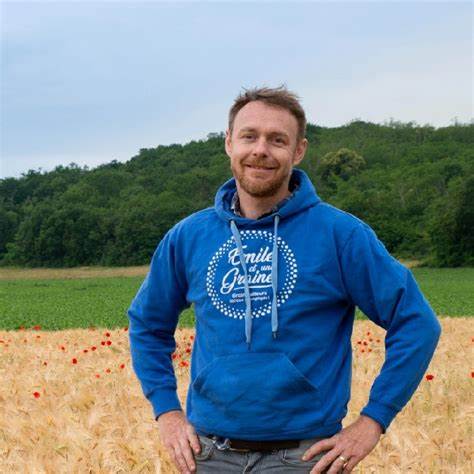
Thierry Desforges, farmer in Itteville (Essonne) and digital referent for the FNSEA:
“Today, I think that digital technology is meeting very specific needs. Nevertheless, we’ve reached a plateau. If it doesn’t improve farm profitability, digital technology won’t be deployed on a massive scale.”
The ideal OAD?
Thierry Desforges’ dream DAT? The one that tomorrow will be able to tell him, for each geolocated plot and after the analysis of millions of data linked to the composition of his soil, the genetic characteristics of his varieties, more efficient long-term weather predictions and more in-depth knowledge of the evolution of bio-aggressors on a rotational scale: what to sow and where in the next four years. “For example, if I have a five-year contract with a collector to deliver 15 tonnes of lentils, the AOD must be able to point me to the right plot, tell me how to optimize crop management and what the technico-economic balance sheet will be,” he explains.
Is anyone already on the case?
Interview with François Thierart, co-founder of MyEasyFarm and regional ambassador for La Ferme Digitale
The La Ferme Digitale network of start-ups promotes innovations and solutions for sustainable agriculture. Many of them have invested in the field of plant protection. Among the challenges identified: traceability and reducing the quantities of phytosanitary products.

“Start-ups are the agile vanguard for meeting farmers’ needs.”
Is plant protection an area covered by La Ferme Digitale start-ups?
Of our 120 start-ups, almost 30% are working in this field, and in a variety of ways. Some choose to develop biocontrol products, while others develop decision-support tools. For the latter, several issues are at stake. The first involves reducing doses without penalizing yield. This translates, for example, into the development of tools for recognizing weeds during application, so as to target them more effectively. In some cases, these techniques can reduce doses by up to 90%, which is very promising. Traceability is also becoming a key issue. Farmers are increasingly being asked to tell operators what product they are using, when and at what dosage. A number of start-ups are developing OADs to make his job easier, and to ensure that he complies with regulations.
How do your companies work with the agricultural ecosystem?
Some start-ups are members, but we also work with partners and a network of “friends” of La Ferme Digitale. We’re looking to create more synergies in the world of agricultural supply and solution providers. Our aim is to avoid operating in silos. That’s why we’re trying to strengthen our exchanges with major groups, particularly on the subject of plant protection. We bring them agility and innovation. For their part, they have considerable resources at their disposal to deploy these tools. All that remains is to convince the farmer of the usefulness of digital solutions. But once they’ve adopted them, they’ll stick with them!
Is the issue of digital agriculture well taken into account by public policies?
We are raising awareness and lobbying the government to explain that data plays an important role in the agro-ecological transition of French agriculture. In 2022, we even produced a report on French Agritech along these lines. Investment plans such as France Relance 2030 focus heavily on agricultural equipment. This is essential. However, we also need to support the development of software which, when connected to this agro-equipment, enables more precise control of phytosanitary treatments.
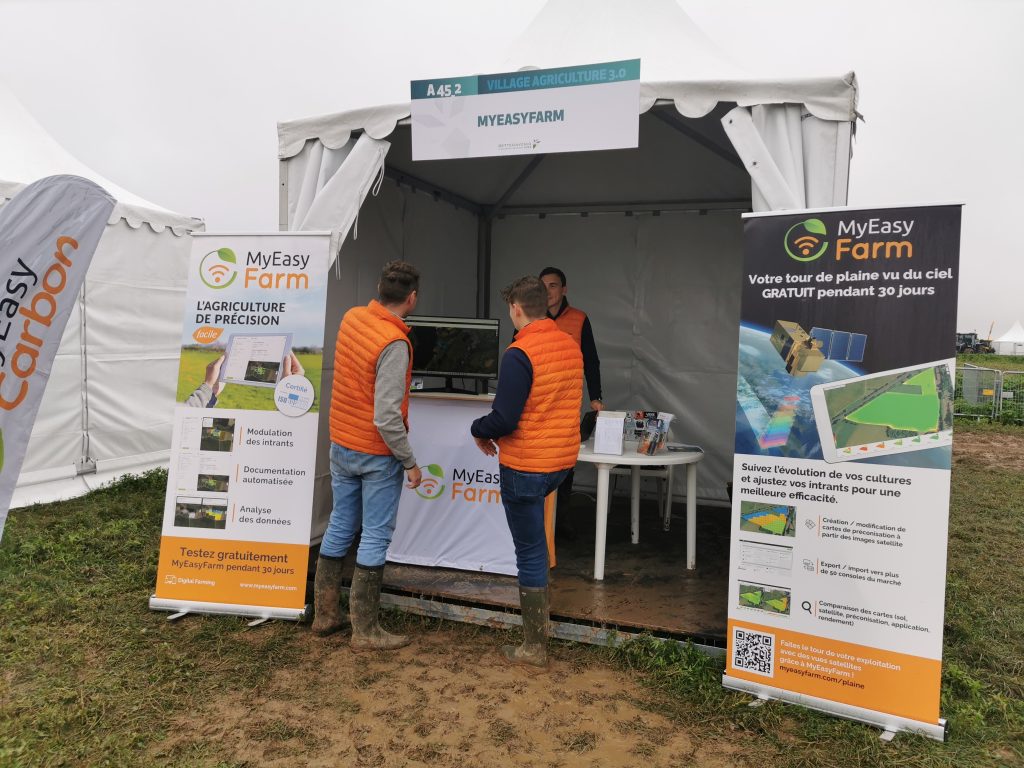
MyEasyFarm is a platform specialized in precision farming and low-carbon agriculture. Awarded the Data Agri label, it is interoperable with the majority of plot management software, ADMs on the market and all agricultural equipment.
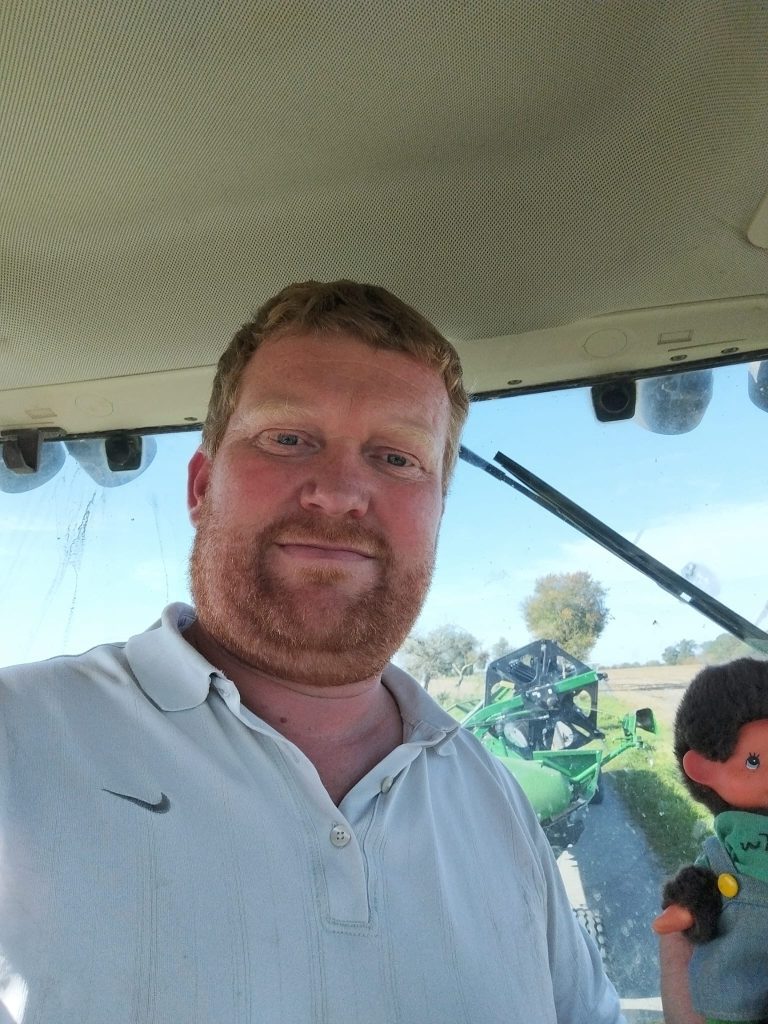
Brice Beaulin – farmer at Rogny-les-Sept-Ecluses (89)
« “The difference lies in reducing the administrative burden”. »
When it comes to agronomy, digital technology, including Decision Support Tools (DST), must support human exchanges. Even if I use DATs to check the weather or manage my fertilization, I still talk to my technician and my agricultural development group. On the other hand, where digital technology can really make a difference is in administrative management and traceability. These tasks are increasingly time-consuming. Quite often, and this is my case, if a farmer manages part of his farm organically and the other part conventionally, the number of declarations is multiplied. This also applies to the procedures required by the industry. Our storage organizations are demanding increasingly detailed monitoring of our farming practices and production.
Robotics adapt to new agro-ecological practices
Can robots respond to the constraints imposed by the agro-ecological transition? Changing production systems requires more time in the field and greater practical finesse. The contribution of these machines will be evaluated at the AgroTechnoPôle in Montoldre, in the Allier region, as part of the national Grand défi de la robotique agricole (Grand challenge in agricultural robotics).
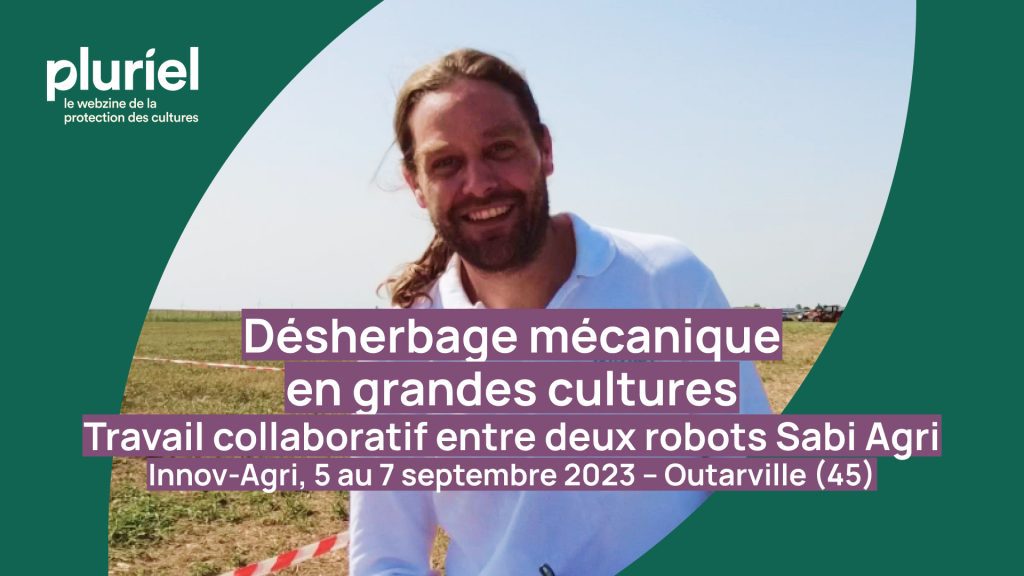
The Ministry of Agriculture and Food Sovereignty is counting on digital technology and robotics to speed up the agro-ecological transition, as it strives to reduce the use of inputs as part of the European Green Deal and to overhaul the Ecophyto Plan in France. With this in mind, more resources are being allocated to research projects.
The Grand défi de la robotique agricole (Grand challenge for agricultural robotics) was launched on September 22, with the laying of the “first stone” of the AgroTechnoPôle located on the Inrae site at Montoldre in the Allier region, with a budget of €21 million allocated by France 2030.
This collaborative platform is part of a network that will be structured as part of the Grand défi.
Backed by the research laboratories of Inrae and CEA, among others, it is enriched by the skills of innovative companies and leading equipment manufacturers. In addition to the deployment of operational solutions for farmers, the Grand défi de la robotique must overcome technological and regulatory obstacles.
Creating benchmarks for robotics deployment
Acceptance of a new technology requires the creation of references. Ultimately, the Grand défi de la robotique agricole must provide data to answer three key questions for farmers: What needs are covered? What are the benefits and return on investment in terms of freed-up working time, crop monitoring and agro-ecological transition?
Test beds will be set up to characterize robots in relation to agro-ecological practices. All issues will be reviewed: cyber security, energy consumption, soil compaction, spraying performance with on-board intelligence, working time, field safety, etc. Benefits have already been identified, particularly in vineyards and market gardening, the sectors best equipped with robots. Stéphane Duran, RobAgri project manager, comments: “Digital technology and robotics increase precision. The machines carry out repetitive tasks autonomously and can intervene in difficult areas. They also solve the problem of recruiting seasonal workers and drivers. For lack of manpower, harvests go to waste.
Configurable, these machines can work in swarms to optimize work sites: an electric master tractor works with one or two autonomous units, like the device developed by Sabi Agri. Another advantage, pointed out by Jean-Luc Picourlat, farmer and creator, via his company Softivert, of a Softi Rob robot prototype designed for corn and soybean management: “In addition to lightening the workload, robotics is changing the way we look at agriculture. During a demonstration with our robot, out of the 250 people present, we had almost 200 neighbors“.
Innovative farming practices: what role do robots play?
At the AgroTechnoPôle, robots will be evaluated in the context of new agroecological practices, such as strip cropping techniques installed over 2 to 3 ha. The alternation of different species promotes biodiversity and increases the number of predators. As a result, pressure on pests increases. For Philippe Heritier, robotics and systems engineer at Inrae, along with biocontrol and varietal tolerance to bioaggressors, “these new ways of cultivating represent the future of crop protection”. Nevertheless, a change of scale is taking place. For such more refined practices, time is needed. “We know that with robots, we’ll be able to work at night”, stresses Stéphane Duran. There’s also the question of seed allocation. “Here again, robots can help, particularly by sorting them using artificial intelligence”, adds Philippe Héritier.
Acceptance of this new way of farming remains to be assessed. Research work is also being carried out from a sociological angle, in conjunction with the LAPSCO laboratory (Laboratoire de Psychologie Sociale et COgnitive) of the University of Clermont-Ferrand and the CNRS. What’s the current state of robot supply for agriculture?
In 2023, according to the Observatoire du numérique de la chaire AgroTic de Montpellier :
- 600 robots dedicated to crop production will be in operation, compared with 100 in 2018
- 98% of them integrate weeding functions
- 2% are used solely for handling
- 47% are used in market gardening and 42% in viticulture.
Robots such as the track-mounted Karl robot from Kuhn are arriving in field crops.
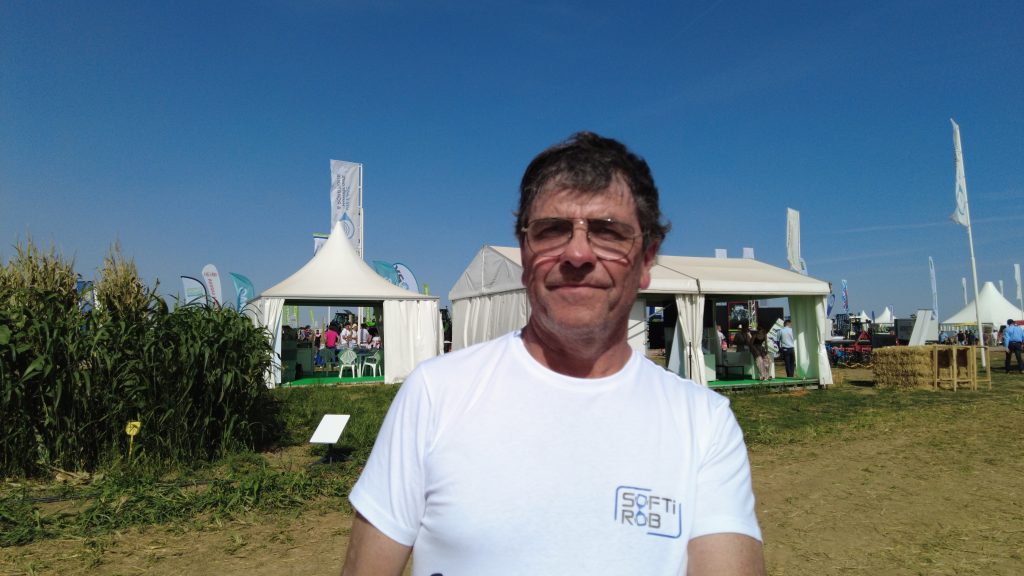
The lack of manpower, the drudgery and safety of the workplace were among the reasons that prompted farmer Jean-Luc Picourlat to create the e-K18 rover within his Softivert (Softi Rob) structure: “The role of the farmer is not to drive a tractor, but to concentrate on the job of agronomist and manager“. The machine sows, spreads fertilizer and tows a sprayer for precision weeding.
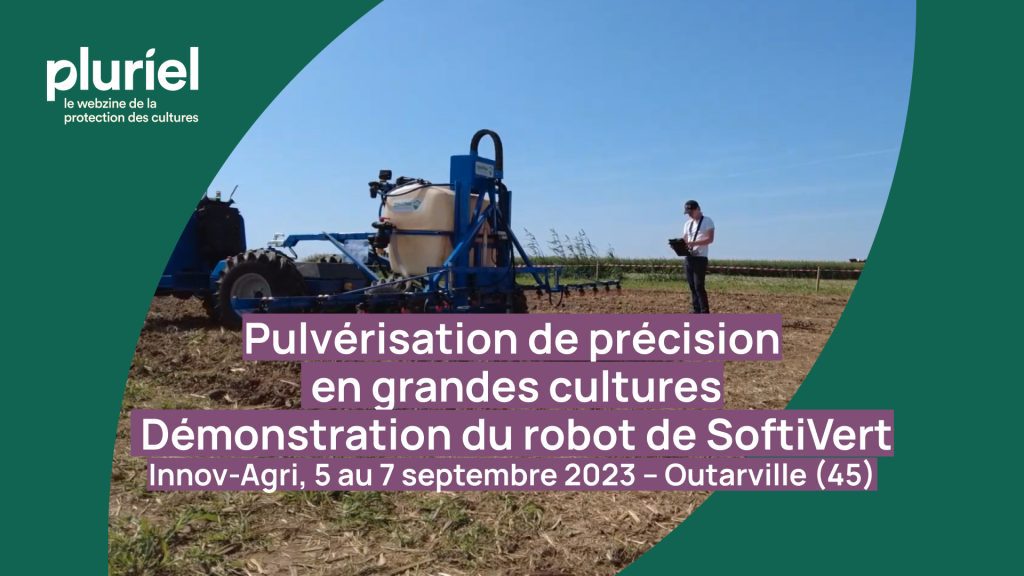
Electric robots, easy access to charging points at the head of the field

Jean-Marie Tyrode, territorial engineer in charge of ecological transition at Enedis:
« The role of the public utility is to support the energy transition in parallel with the agro-ecological transition. »
Robots like Farmdroid’s FD20 are self-sufficient in energy thanks to the solar panels covering their platforms. But what about battery-powered robots? While manufacturers offer additional batteries, the other option is to install recharging points at the end of the field. Jean-Marie Tyrode, engineer at Enedis, explains: “80% of plots are less than 1.5 km from a high-voltage network managed by Enedis. Electric tractors with 150 horsepower will soon be available. If we want to support this mobility, the equipment needs to be able to recharge in less than half an hour, so that it can complete several work cycles in the fields without having to return to the farm. Enedis offers connection to the electricity grid in alternating current. For farmers with photovoltaic panels, it is also possible to use their electricity production in their plot via the collective self-consumption offer. DC fast-charging solutions from the public grid are also being studied.
When digital technology digests phytosanitary regulations
Digital technology is providing a welcome boost by integrating regulatory requirements into crop treatment recommendations and facilitating the traceability of practices. Soon, information on phytopharmaceutical products will be directly readable by APIs and machines.
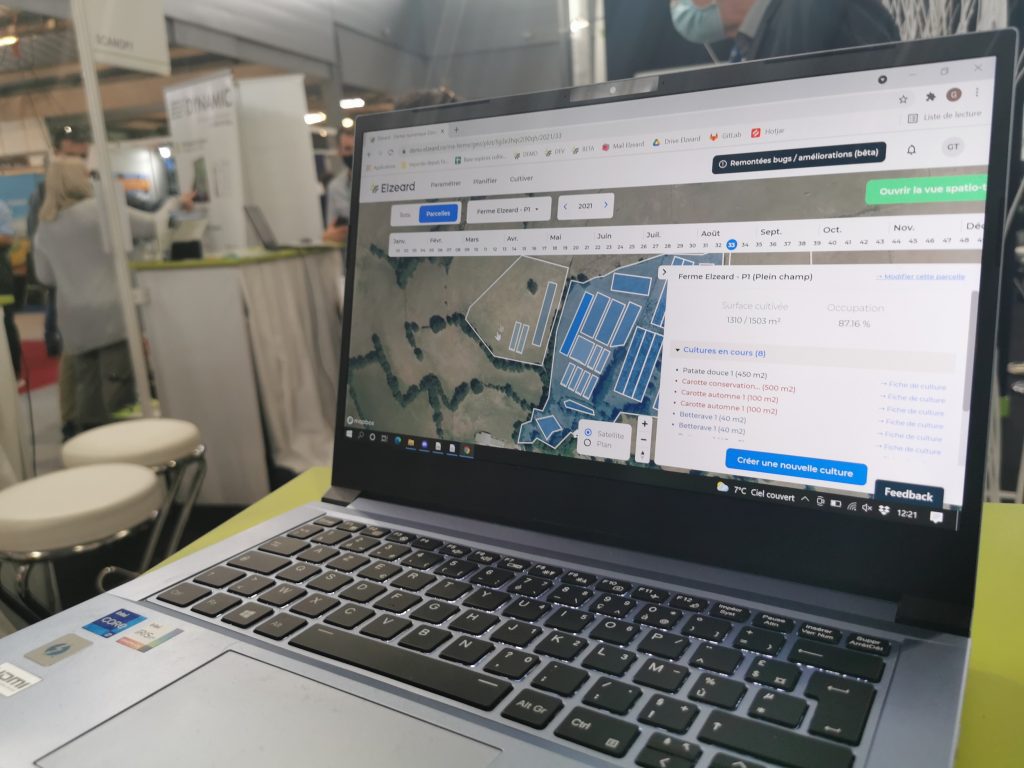
The No. 1 issue in terms of complexity for a farmer remains regulations, which are constantly evolving. All stages of crop protection are concerned, from the use of inputs, to the traceability of farming practices, to the integration of environmental requirements when treating crops. Fortunately, digital technology is helping to better integrate this information.
Software tells us whether the treatment scheduled on a plot is compatible, authorized for the crop and under what conditions,” explains Thierry Desforges, a farmer in Essonne and digital referent for the FNSEA. It makes our decisions more secure. A user of the KeyField solution, he stresses the importance of the electronic treatment logbook proposed to ensure the traceability of his practices required by the authorities.
Will the electronic field book simplify administration?
For Thierry Desforges, however, the electronic field book that the European Commission wants to introduce from 2024 as part of the regulation on the sustainable use of pesticides (SUR) seems “double-edged”. Reducing “paperwork”, avoiding data re-entry and errors, and facilitating statistics, “this logbook should not generate additional checks by the administration in the event of a software ‘bug'”, he warns.
Data can be collected during field work by connected sensors, or emanate from intelligent agronomic platforms to be broken down into plot management interfaces. From 2025, data on plant protection products (dose, re-entry time, safety distance, etc.) will appear on an intelligent digital label stored in a database currently being set up. Called Digital Label Compliance, this project is the initiative of CropLife Europe, an association of plant protection companies.
Suppliers of farm management interfaces such as Atland solutions (SMAG), mesparcelles (Chambres d’agriculture) and Géofolia (Isagri) will transmit these accounting entry files to the authorities in real time via a trusted third party. This principle of a neutral digital intermediary has also been proposed as part of the European Data Governance Act approved by the EU Council on May 16, 2022. This text also makes prior consent mandatory for data use.
Towards an international data exchange standard
Another challenge in facilitating traceability is data interoperability. At the initiative of the United States and Germany, an ISO standardization project was launched this autumn, with standards for data exchange.
This voluntary international project, open to all agricultural stakeholders, aims to standardize the reference architecture for digital tools in agriculture. It proposes a corpus of common vocabulary to designate crop names, development stages, pests and diseases, etc. It also assesses the conformity of agricultural data and their exchange. For Thierry Desforges, “the challenge is to maintain the key points for Europeans in the catalogs, so as to avoid overhauling our systems“. End of the project in 2025?
Digital Label Compliance: regulatory information in a single application
To automatically feed digital interfaces, CropLife Europe's Digital Label Compliance project is creating a standardized regulatory database for plant protection products. All the information required for safe crop protection will be easily accessible and shareable.
Regulations governing the application of plant protection and bioprotection products are becoming increasingly dense. For example, safety distances to local residents vary according to product classification, and also according to the type of crop, nozzle or spraying equipment used. Julien Durand-Réville, Digital Agronomy Manager for Phyteis, explains: “This complexity can confuse farmers, especially as there are so many sources of information, some of which give different indications. The idea of the Digital Label Compliance project is to offer this information in one place, in a standardized way, and to update it regularly“.
In the future, this data will be directly transferable to interfaces including those for plot management and agronomic recommendations. Read by the machines, they will alert the farmer in real time if his sprayer comes too close to a no-treatment zone (ZNT eau) or a riparian safety distance, calculated directly with his plot maps.
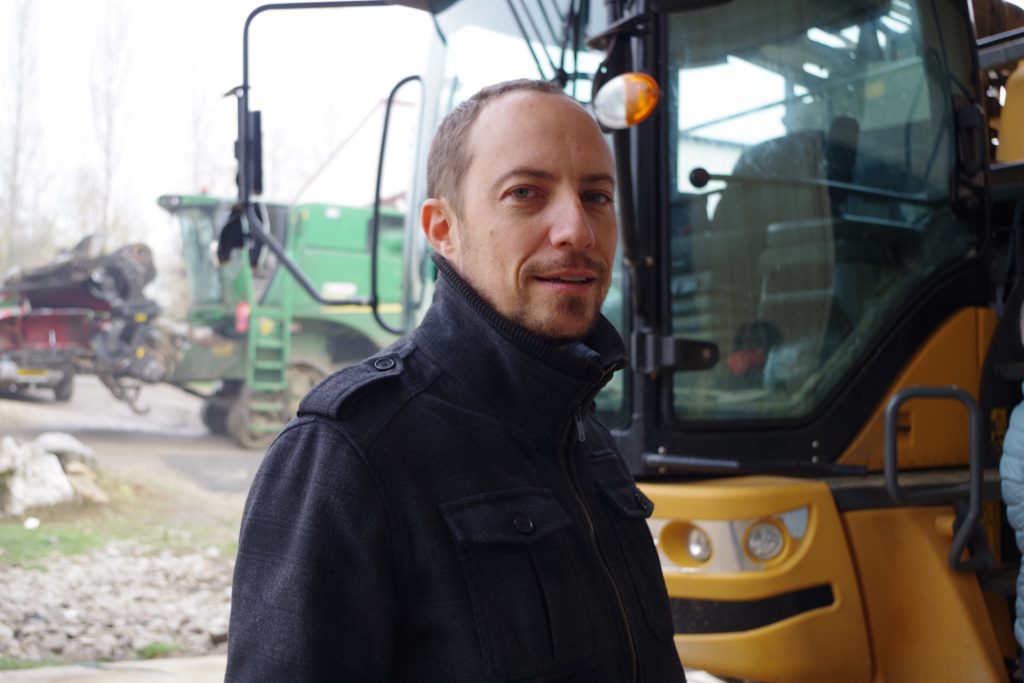
Julien Durand-Réville, Phyteis Digital Agronomy Manager: “The Digital Label Compliance database will be directly consultable via an application, a web browser or any other automated API that is linked“.
First tests with digital labels by the end of 2023
Three countries have been chosen as testers for this project, launched in early 2023: Romania, Germany and Italy. Each is working on dedicated crops. At the end of this year, we are recruiting test farmers and designing the web versions of the applications,” explains Julien Durand Réville. At the same time, the first digital labels linked to the pilot crops should be added to the database. The correct use of these labels will be evaluated during 2024.
The project should be rolled out more widely from 2025 onwards.
Digital label compliance, the intelligent digital label for crop protection
DiscoverPortfolio, digital in agriculture
At every stage in the crop cycle, digital technology can be applied to help farmers make the right decisions. In livestock farming, for example, it helps farmers monitor the health and well-being of their herds. Photo report by Sébastien Champion.
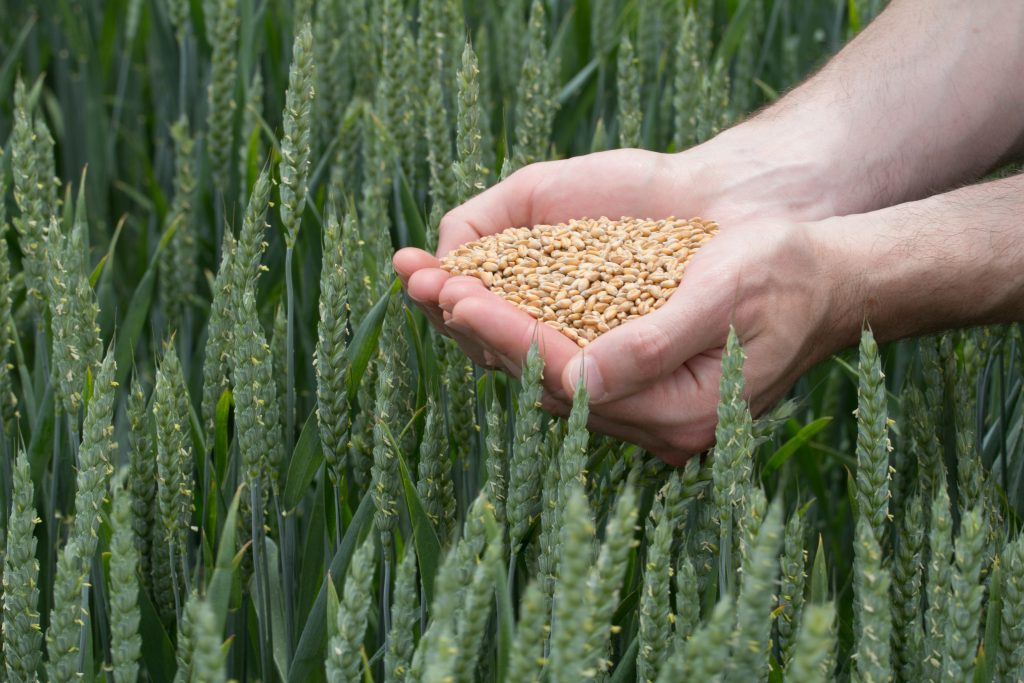
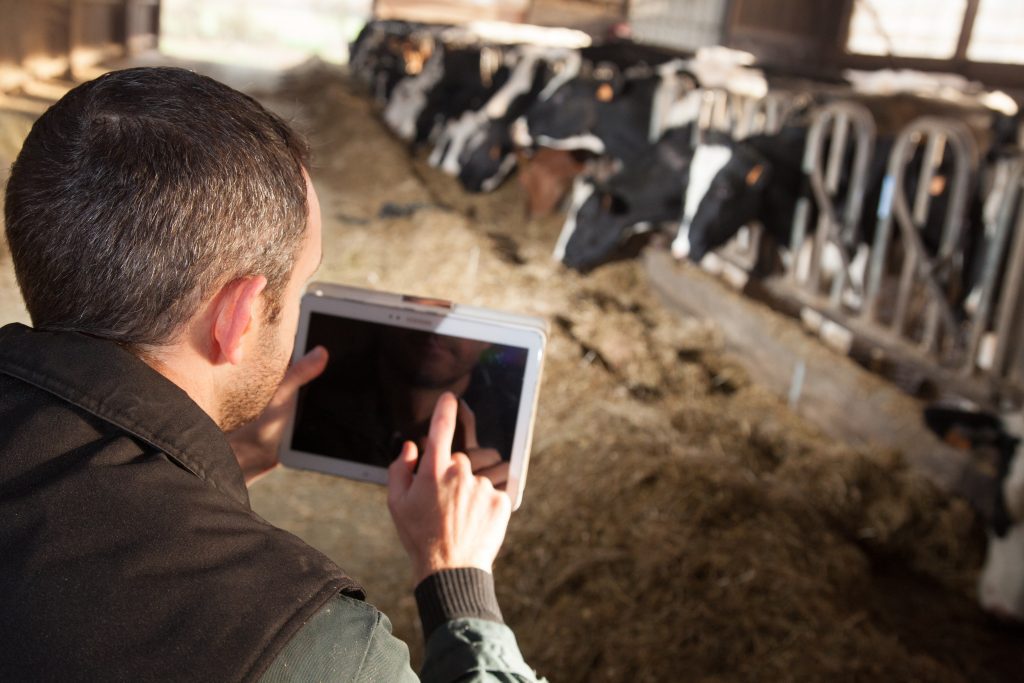
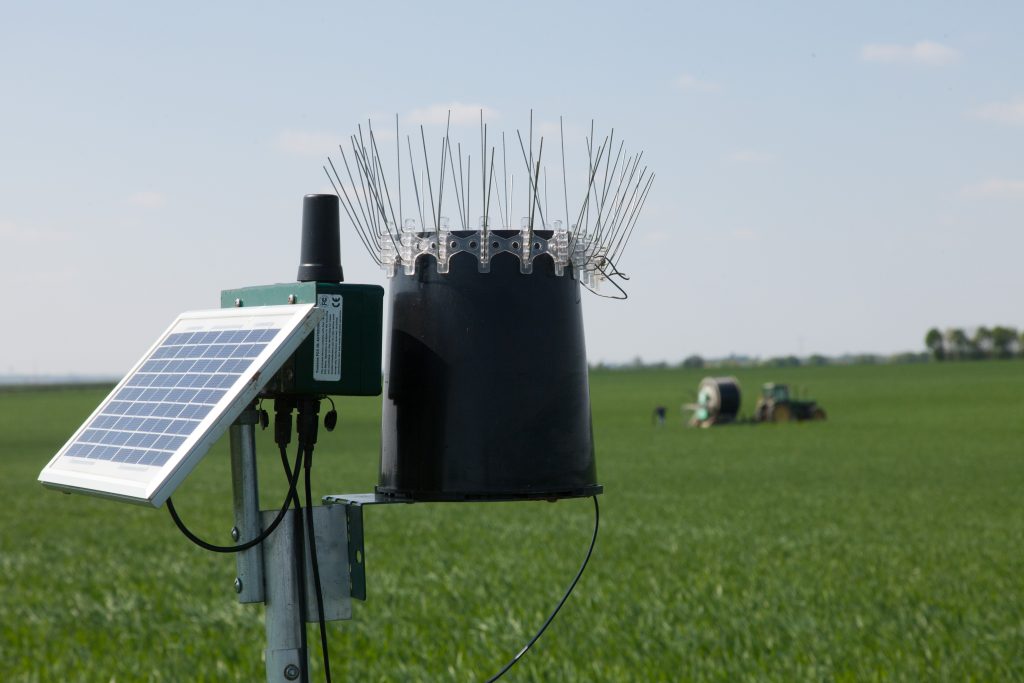
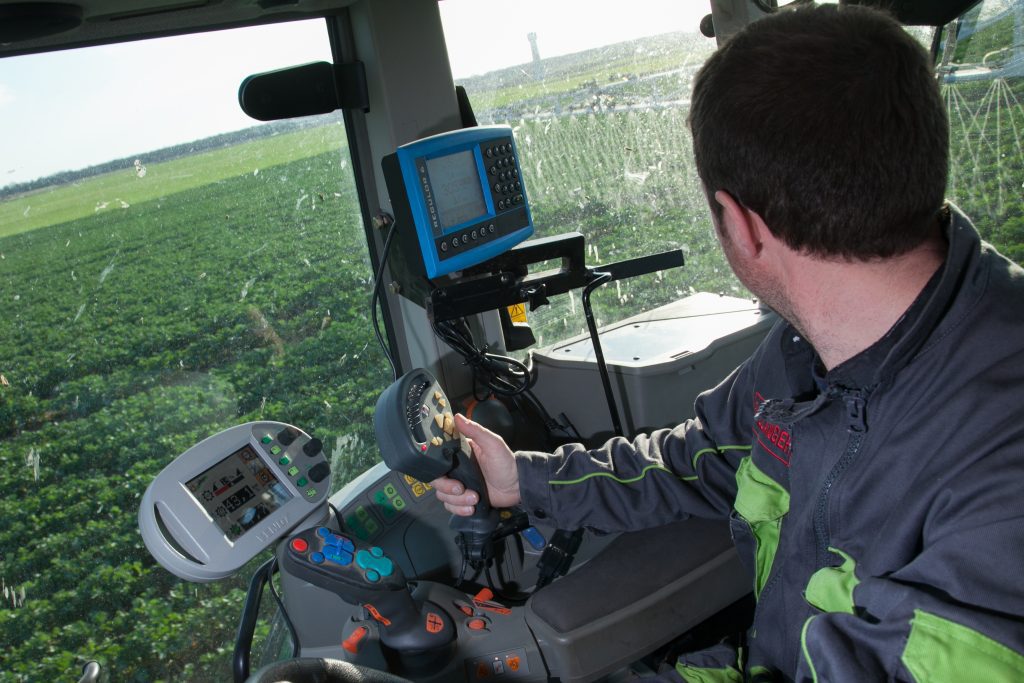
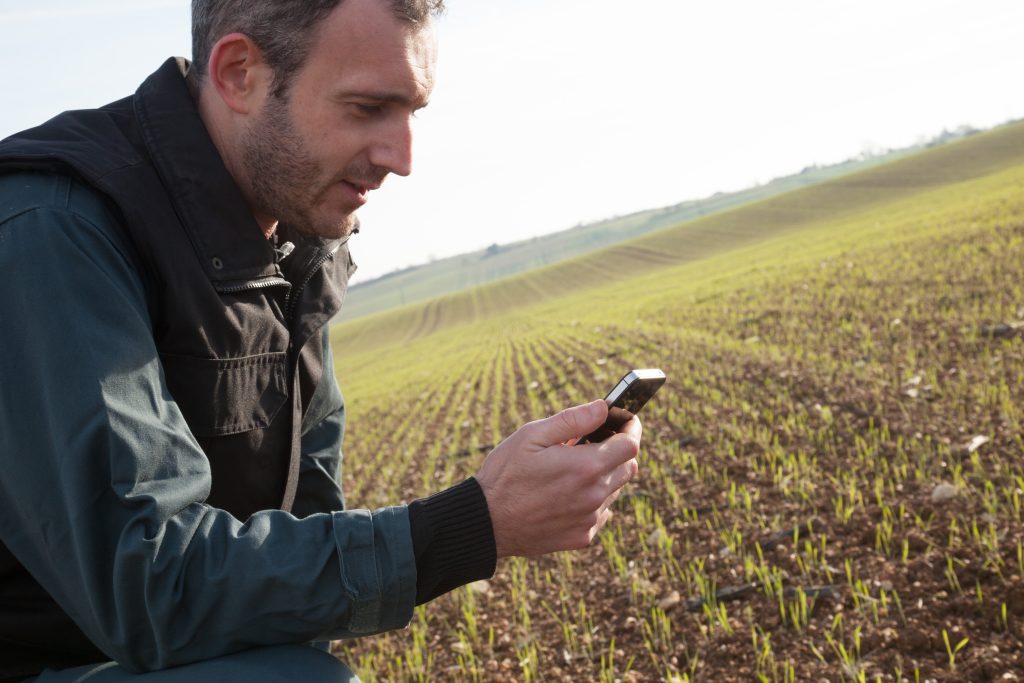
Heard, Read!
37% of the active and basic substances approved by the EU are natural means of biological origin or substances identical to them.
65 applications for the first approval of active substances are currently being assessed (around 30 fall into the category of biological protection as defined in the proposed European SUR regulation).
Source: European Commission, Supplementary impact assessment on the proposal for a European regulation on the sustainable use of plant protection products (SUR).
The Bioeconomy for Change (B4C) network, which brings together 500 members from upstream agriculture to the marketing of finished products, has set up a working group on biosolutions. It brings together 70 structures. “The aim of this group is to put players in touch with each other to facilitate collaborative projects“, explained Ingrid Bouvart, B4C Bioresources Innovation Manager, at the Campus Phyteis day organized on June 6 in Paris. All topics related to the creation of innovative projects were addressed: deciphering possible financing, sharing market data, regulatory developments, etc. “We are seeing the emergence of this combinatorial approach, with numerous projects based on biocontrol solutions and Agtech tools“, she added.
Alexandre Quillet, President of the ITB, on October 25 at the inauguration of the Betteravenir trade show (80).
“The alternatives to neonicotinoids are not yet efficient enough to ensure that the risk of jaundice is behind us. The PNRI deserves to keep up the momentum.”
It’s not for want of sounding the alarm. Cherry growers in Provence have lost almost 40% of their crop this year. They usually produce 15,000 tonnes of cherries a year, according to statistics from the Sud region. Most of the orchards are located in the Vaucluse region. But the hot, rainy weather of late spring favored attacks by Drosophila suzukii. This Asian insect has been wreaking havoc for several years now. Growers are at a loss. We’ve been deprived of all the active ingredients that are effective against this fly”, says Jean-Christophe Neyron, President of the AOP Cerises de France and a producer in Malemort-du-Comtat (Vaucluse) (…) “Some producers have preferred not to pick the fruit, as it’s too costly in terms of expenses”, adds Jean-Christophe Neyron. We had to do a lot of sorting, and picking time was doubled. While sales prices have risen due to the poor harvest, they have barely been able to finance labor. Faced with uncertainties, orchards have disappeared in recent years (…) “In the past, we had a marketing potential of over 1,000 tonnes per year,” continues the Sica director. Today, it hovers around 800 to 900 tonnes, and this year it has fallen below 500 tonnes.”
Phytosanitary impasse: cherry growers on borrowed time by Chantal Sarrazin, La Franceagricole.fr (October 20)
Highlights
Phyteis members' national and international news from July to October 2023.
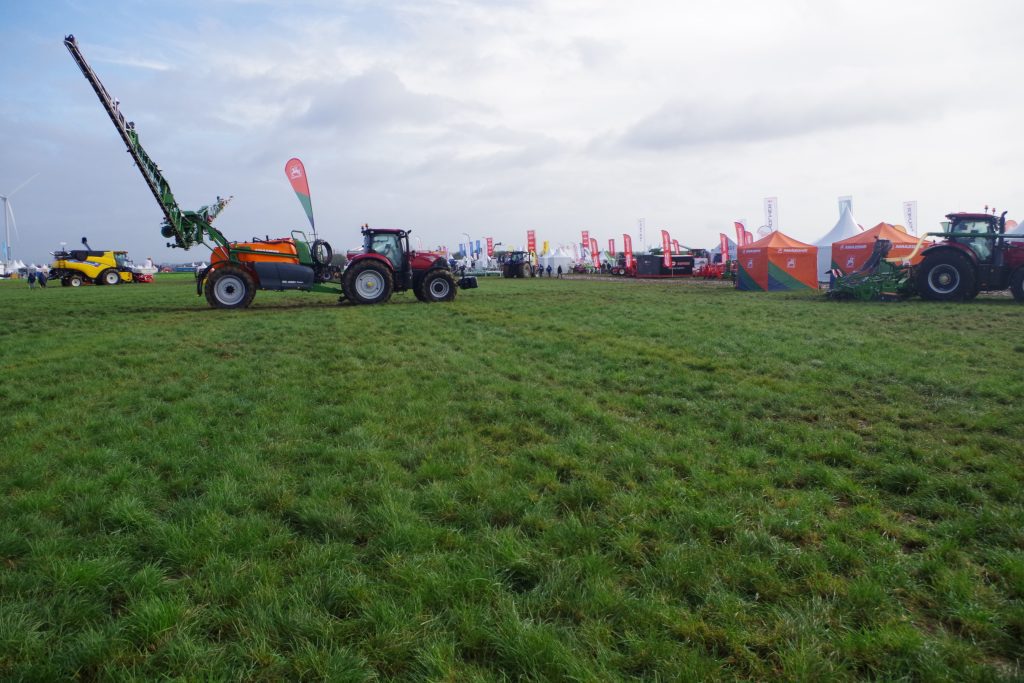

October
On October 25 and 26, nearly 10,000 visitors from France and abroad strolled the aisles of the Betteravenir trade show in Berny-en-Santerre. Nine Phyteis members (Adama, BASF, Bayer, Corteva, FMC, Gowan, Phyteurop, UPl and Syngenta) presented their combined solutions and innovations to protect beets.
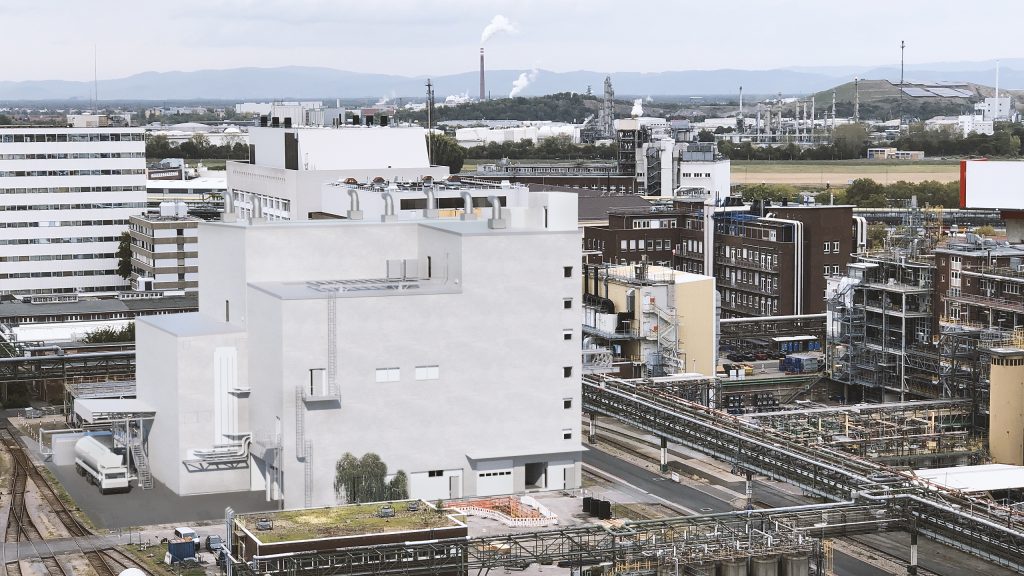

BASF is building a new bio-fermentation plant at its Ludwigshafen site in Germany to manufacture biocontrol solutions and crop protection products. In particular, the plant will produce an insecticide active ingredient derived from a strain of fungus. Commissioning of the plant is scheduled for the second half of 2025.
Corteva Agriscience organizes its Biosolutions business in France for 2024, following the acquisition of Symborg and Stoller, in order to bring together its entire offering.
The company announces the launch of “Place des Agriculteurs”, a web platform entirely dedicated to farmers. This space centralizes all the initiatives of Corteva and its Pioneer seed brand.
A year after presenting its Gigaton Carbon Goal program in Europe to decarborate agriculture, UPL is launching the first pilot in France this autumn. The company is working with agricultural distributors to develop technical itineraries in which biosolutions have a role to play in low-carbon agriculture. UPL is aiming for 15 pilot groups of farmers supervised by three to four distributors or group leaders over the next four years, representing a total of 30,000 ha covered by the program.
On October 16, at the 6th International Rice Congress in Manila, Philippines, Bayer announced the launch of a farming system based on direct seeding of rice. Compared with transplanted rice, this technique reduces water use and greenhouse gas emissions by up to 45%, and labor dependency by up to 50%.
In France, Bayer launched La Communauté agricole on October 12, a collaborative digital platform for agricultural players. It offers multimedia content and is supported in partnership with companies from the agri-supply, digital, agricultural equipment and market sectors : Yara, France Pulvé, Monosem, Seabex, Xfarm, Sencrop, Boursagri.
September
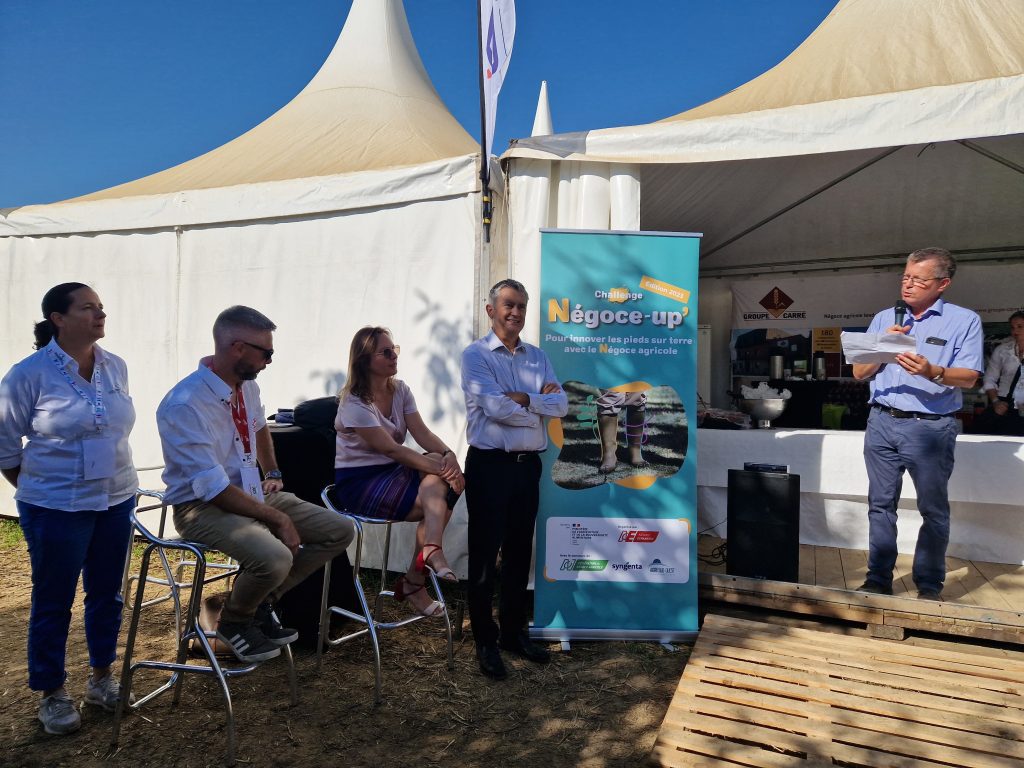

On September 8, the Negoce’UP Challenge awards ceremony took place on the Carré group stand at the Terre de Jim event in Cambrai (59). Syngenta is one of the partners of this trophy, which rewards innovative projects involving a “trade and start-up” tandem. First prize was awarded to the partnership project between Via Végétale and Ets Leplatre (45) for a legume biostimulant. Second prize went to VeraGrow and Ets Martignon (18) for a project to convert bio-waste into a biostimulant product. Third place went to an agricultural transition management tool developed by FarmLeap and Groupe Bernard (01).
Syngenta reinforces its interest in biological products for seed treatment with the opening of its first biological products service center at the Seedcare Institute in Maintal, Germany.
August
Gowan Company announces the completion of the purchase of Isagro S.p.A. With this acquisition, Gowan adds several active substances to its portfolio, including copper hydroxide/oxychloride, tetraconazole and kiralaxyl.
Bayer is investing 220 million euros in research and development (R&D) at its Monheim site in Germany. This is the company’s biggest investment in its crop protection business in Germany since the creation of the Monheim campus in 1979. The new complex will develop the next generation of crop protection products.
July
The De Sangosse group announces its entry into the capital of Pertinent Eco-solutions and acquires the exclusive European license for its insecticide and acaricide specialties. Pertinent Eco-solutions develops natural insecticides based on certain plant extracts.

